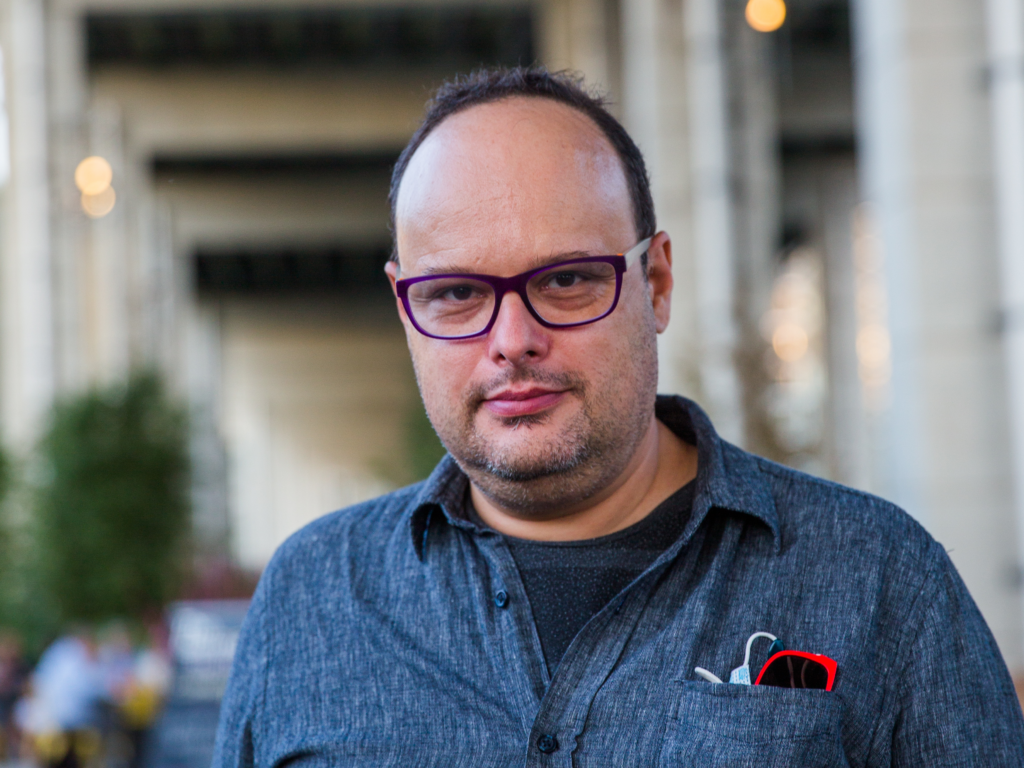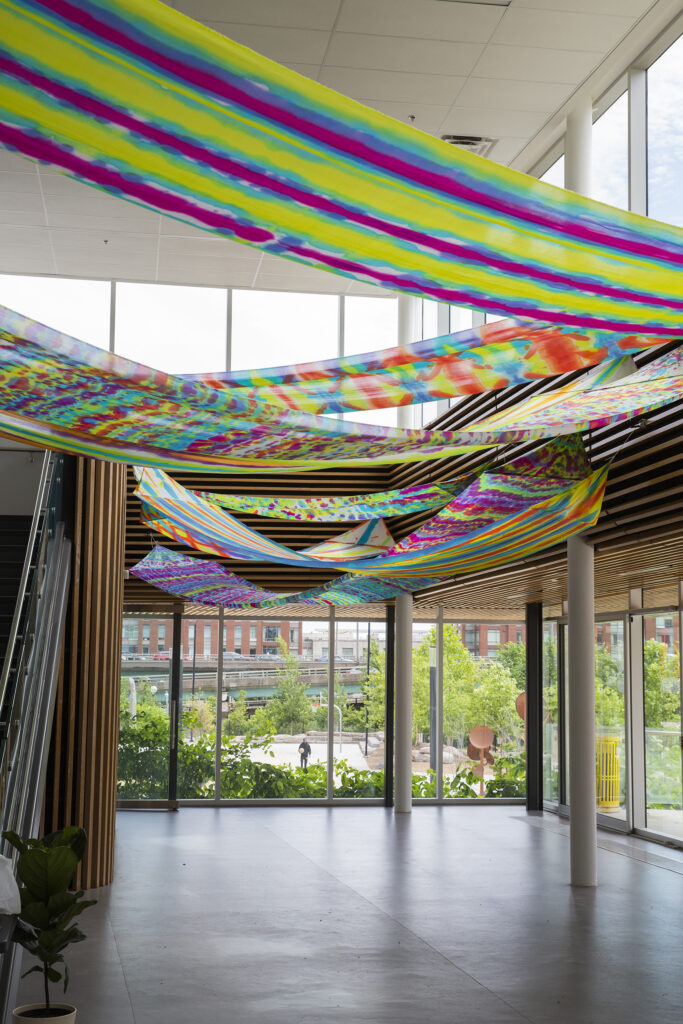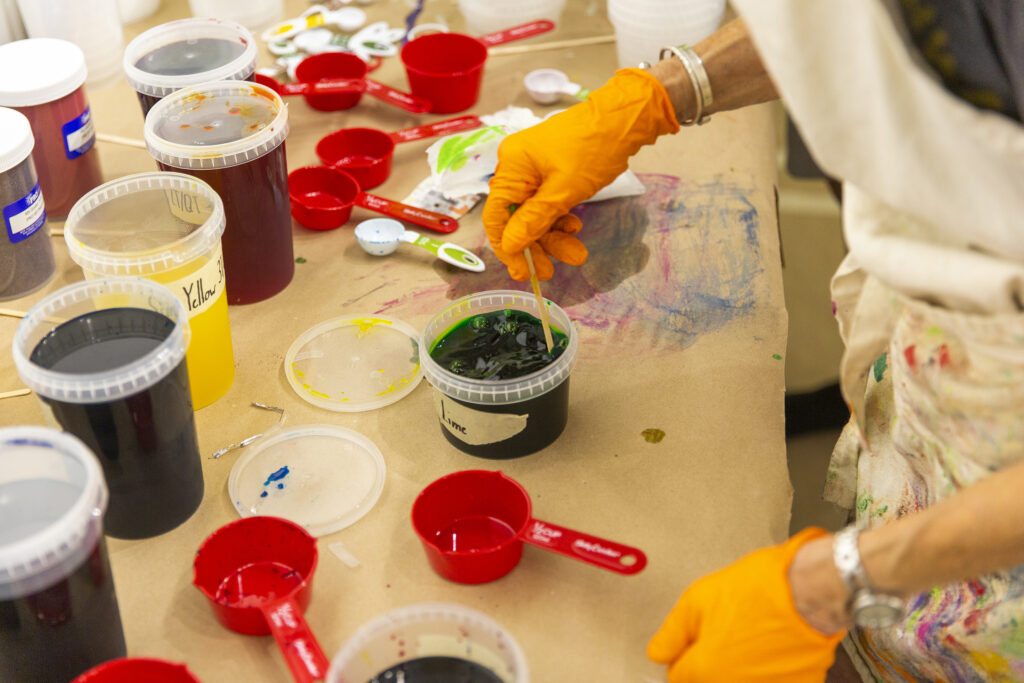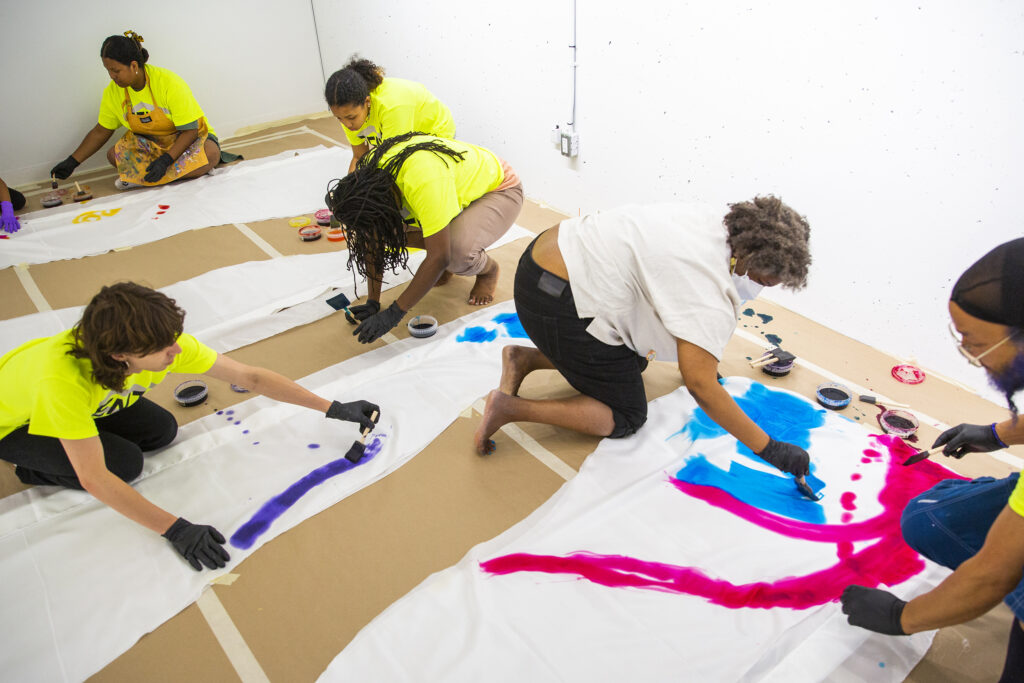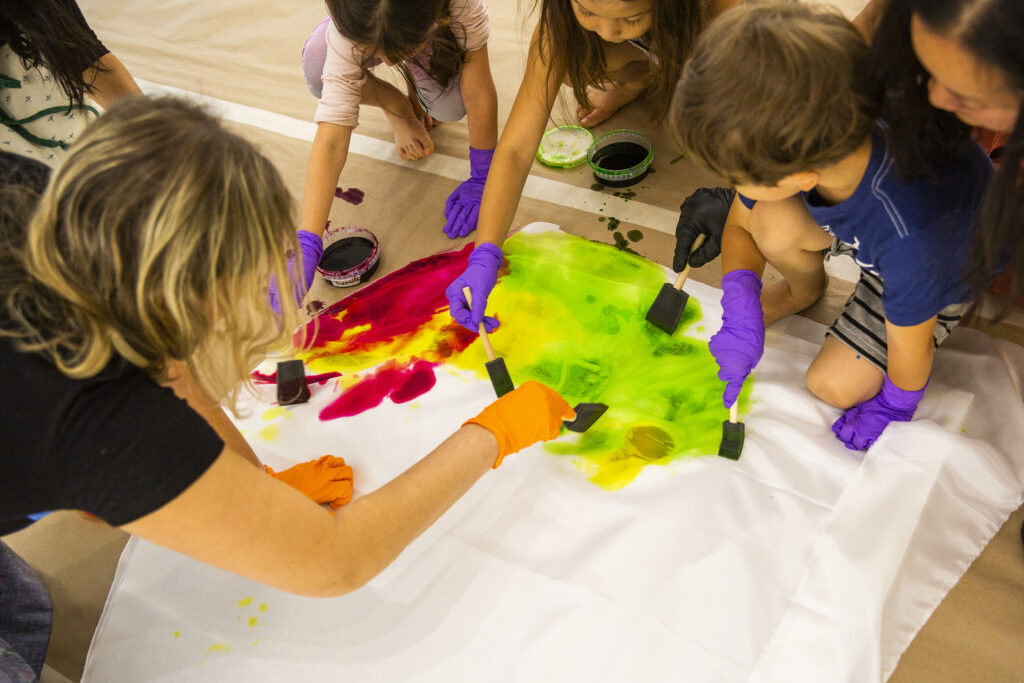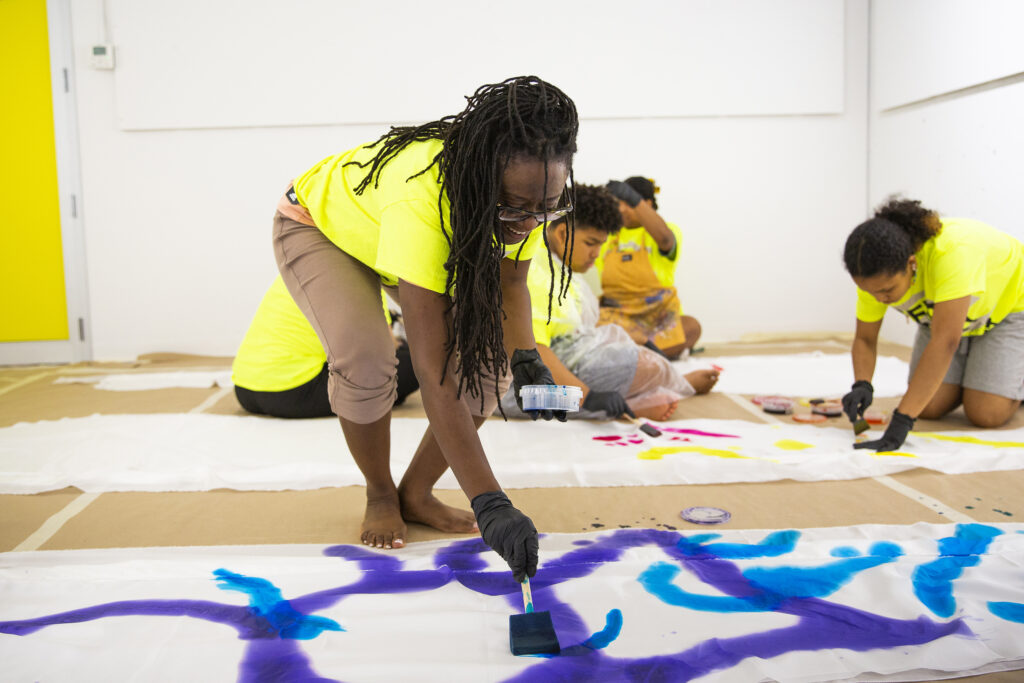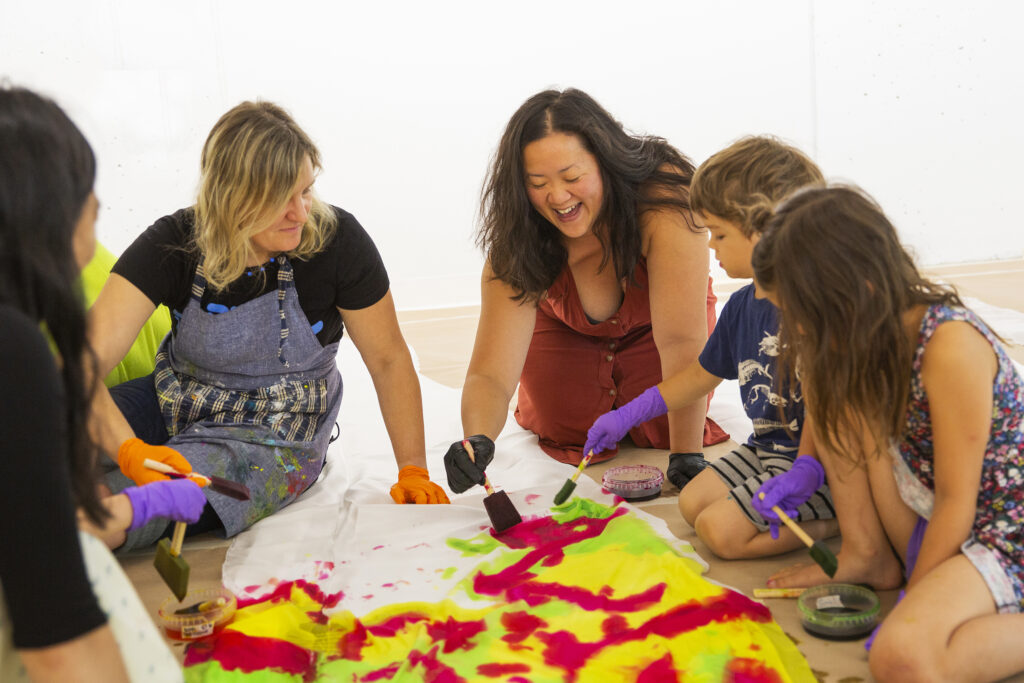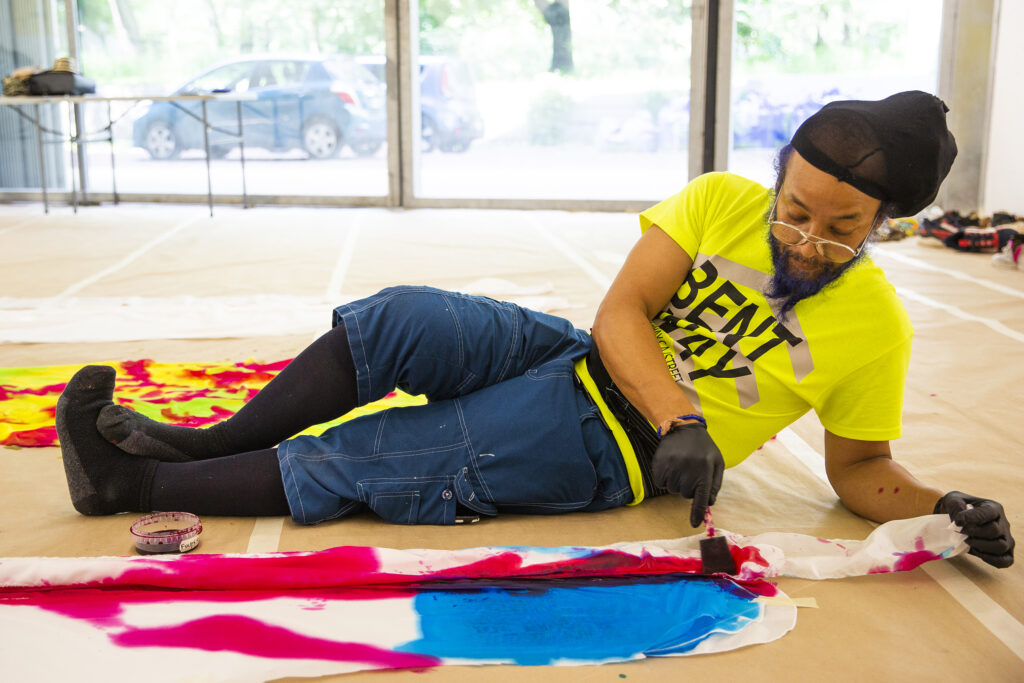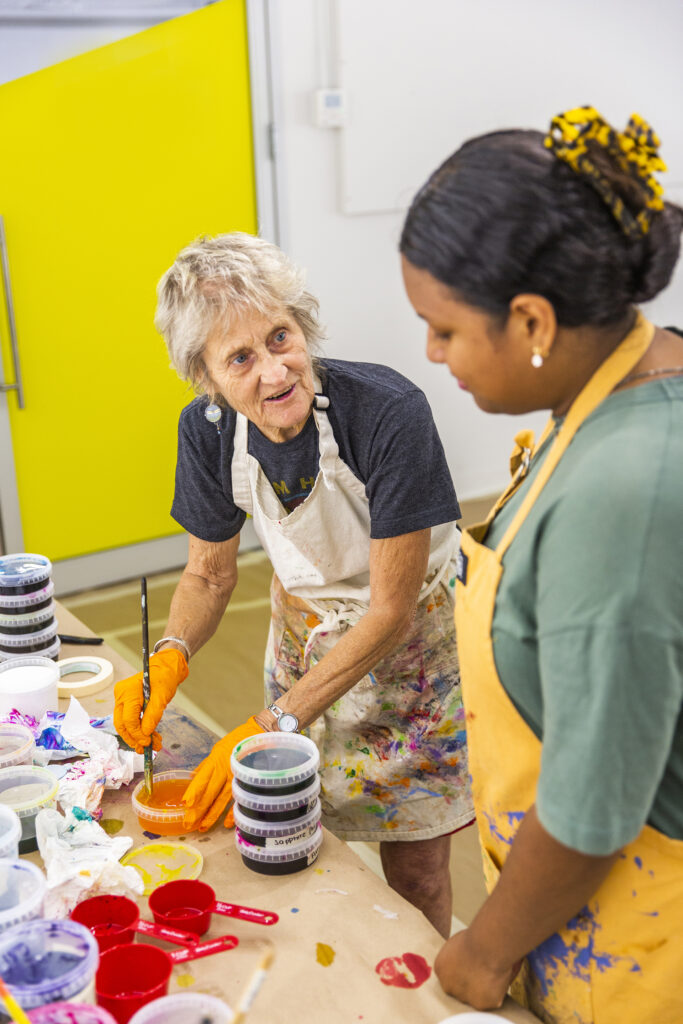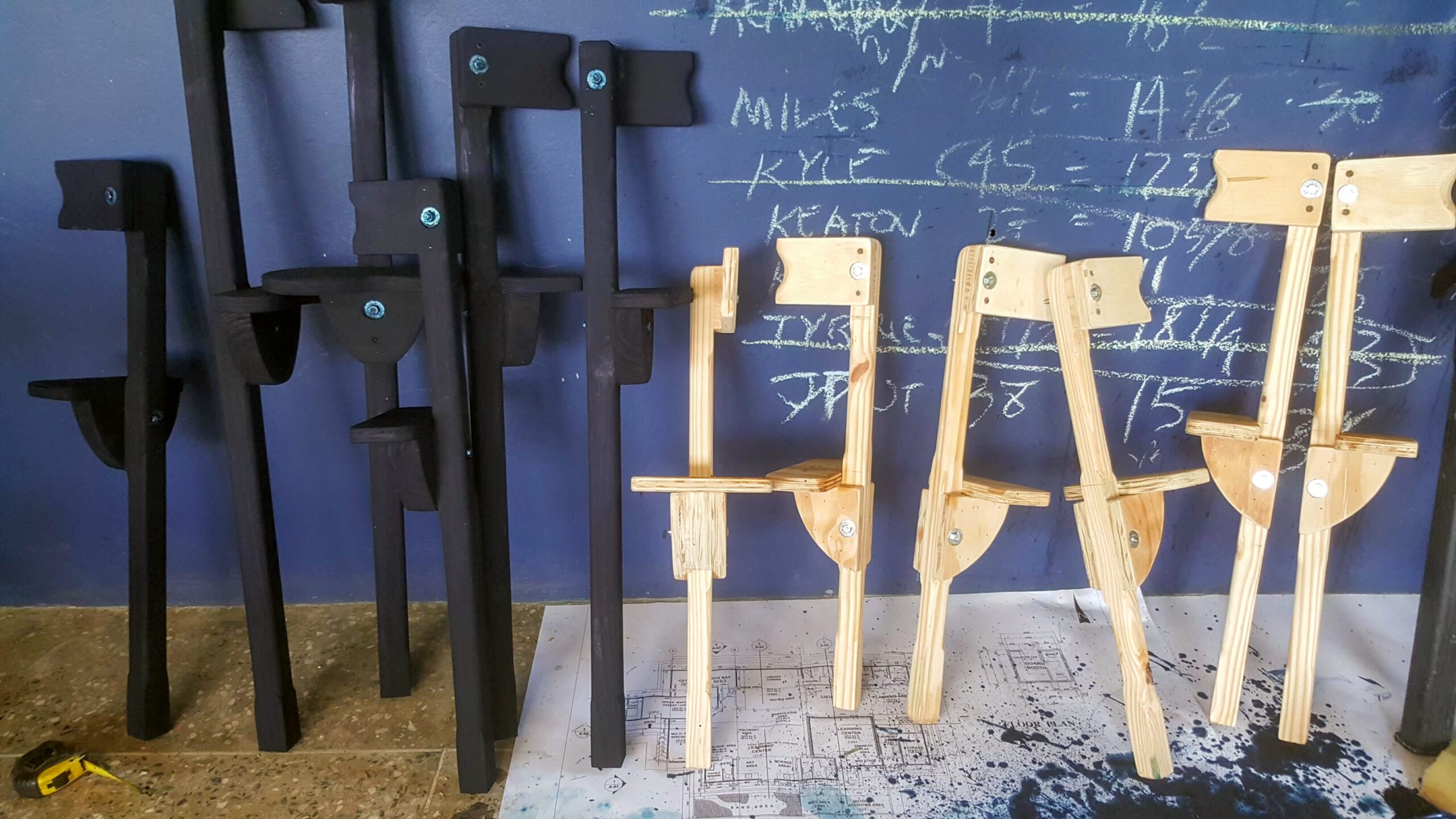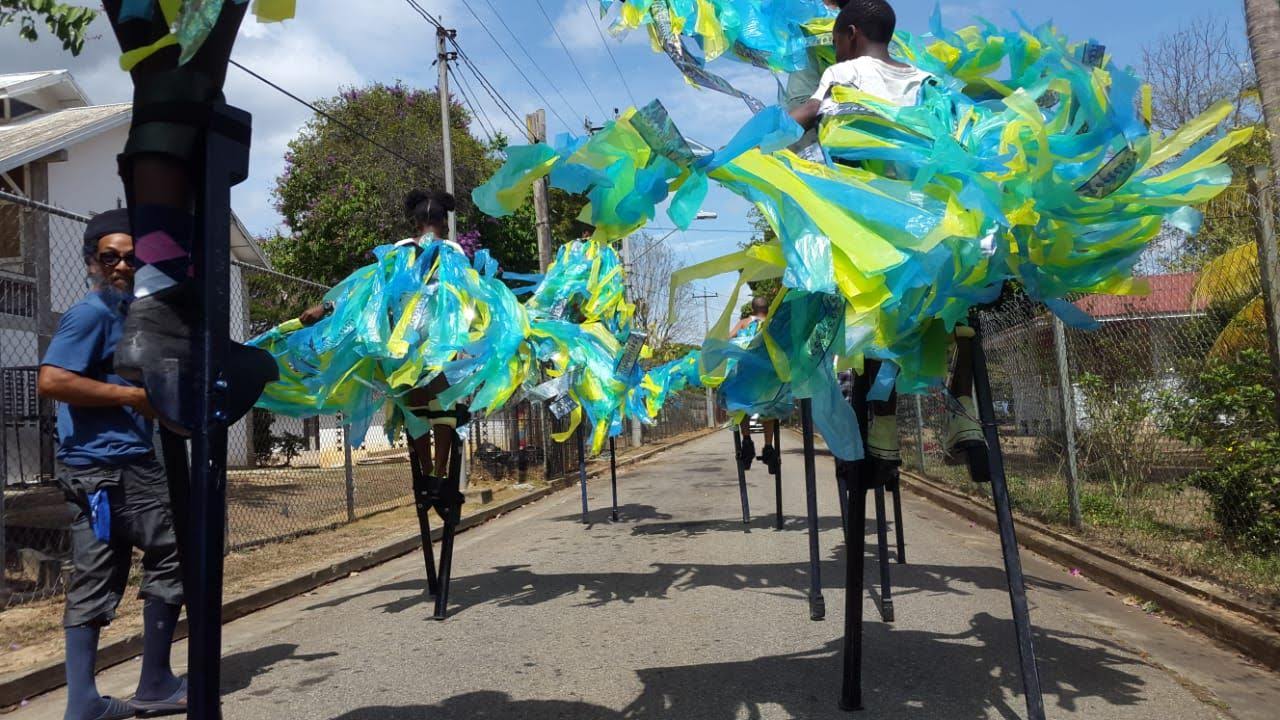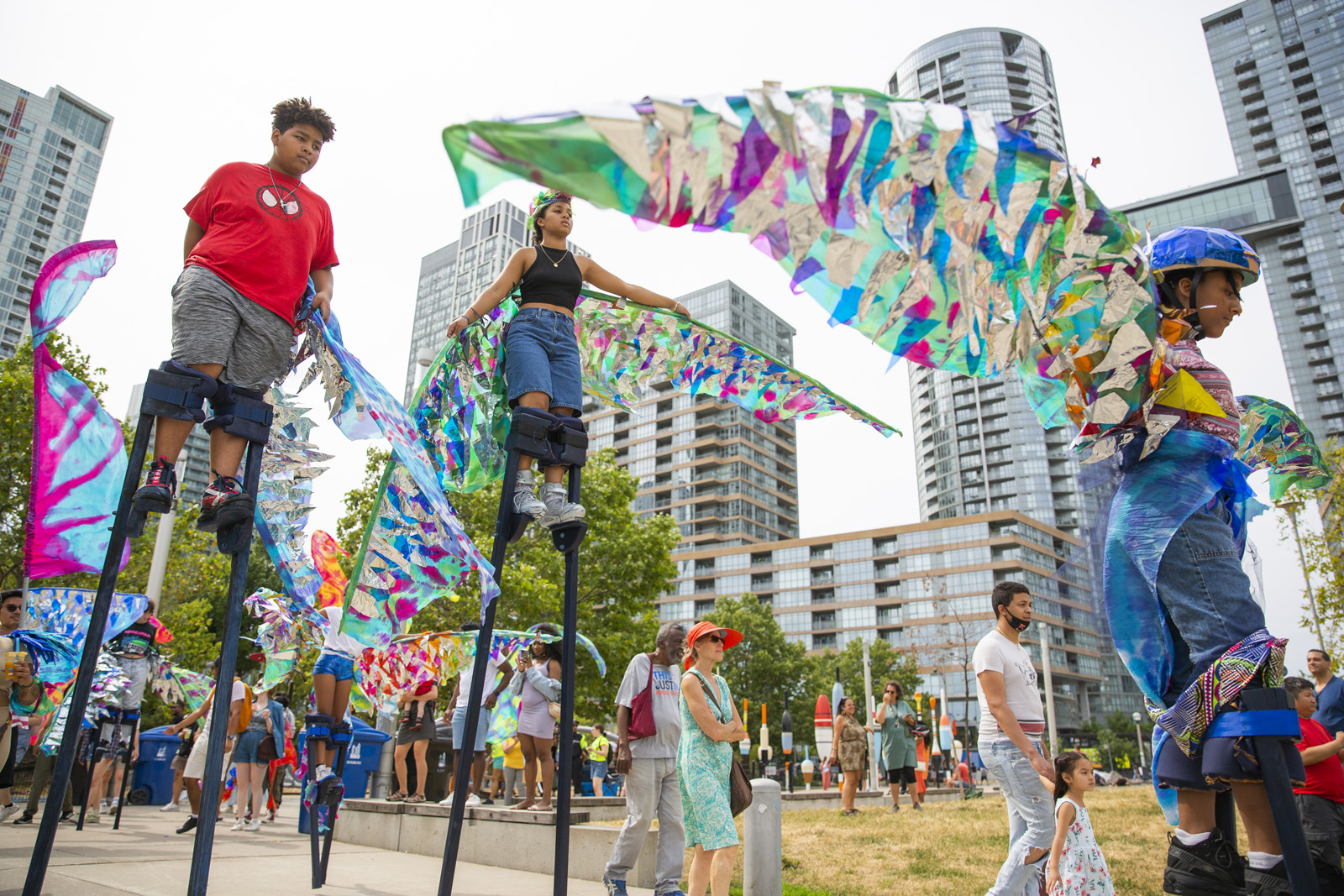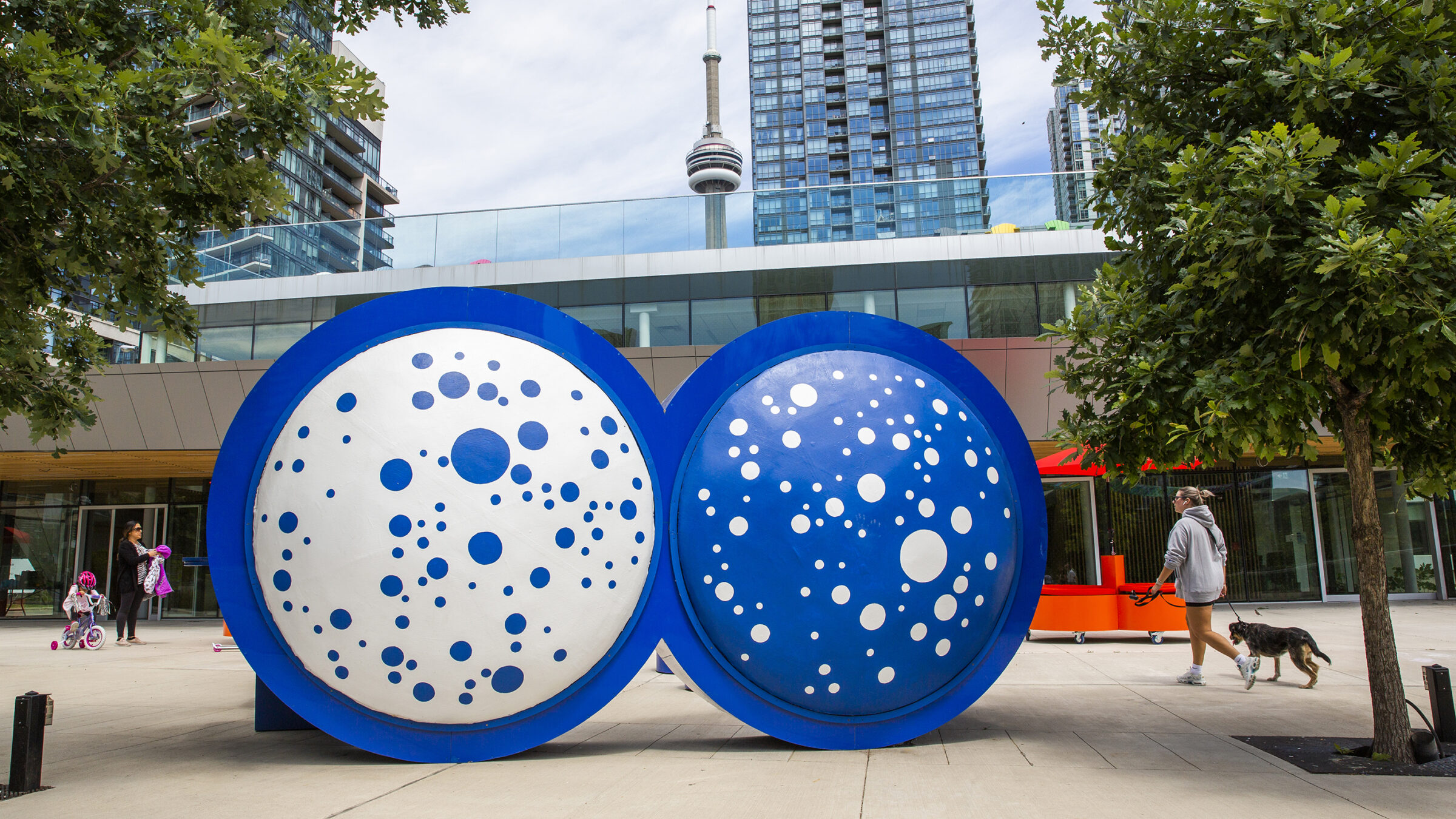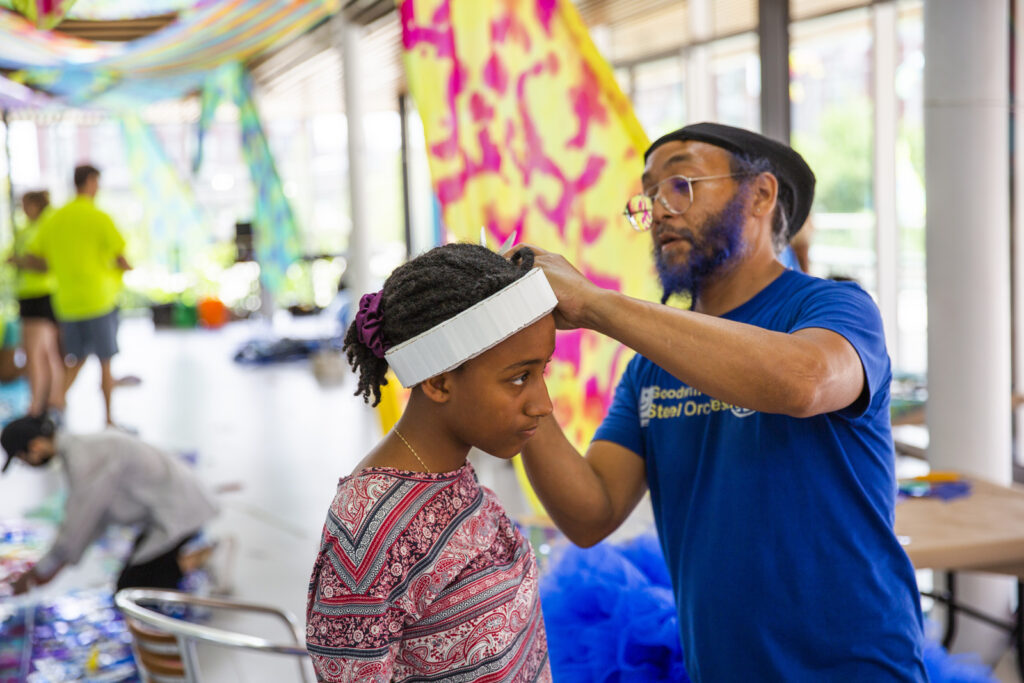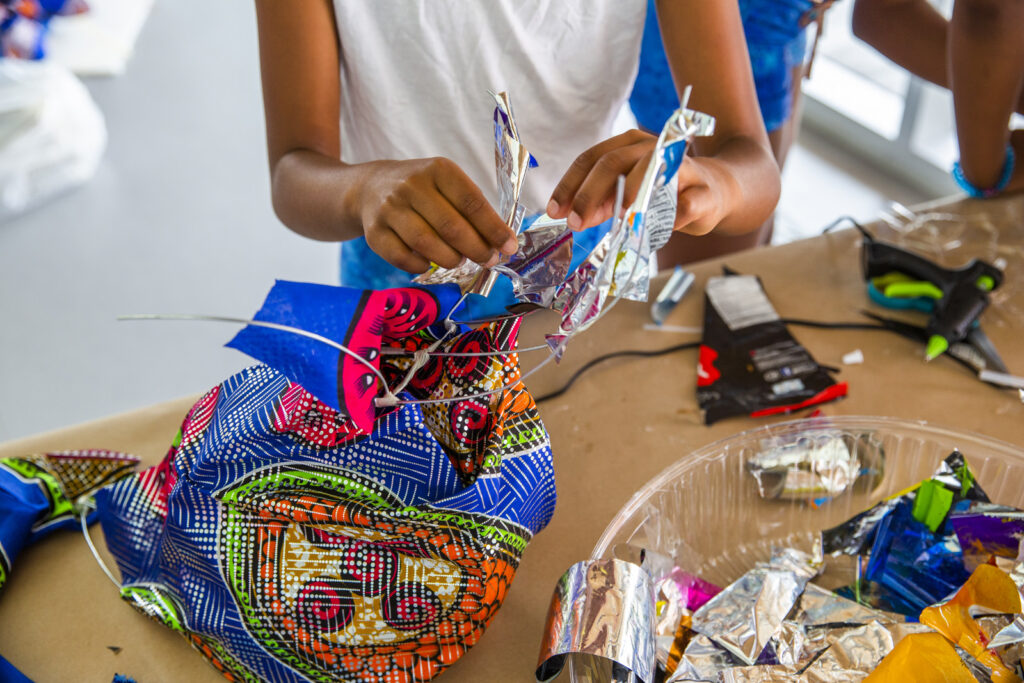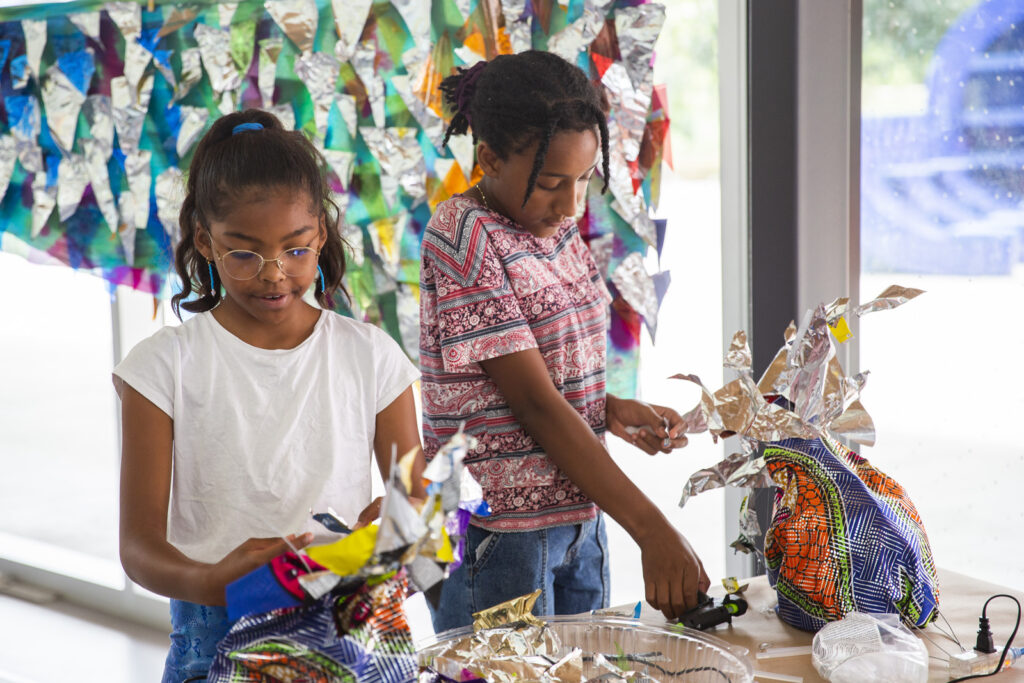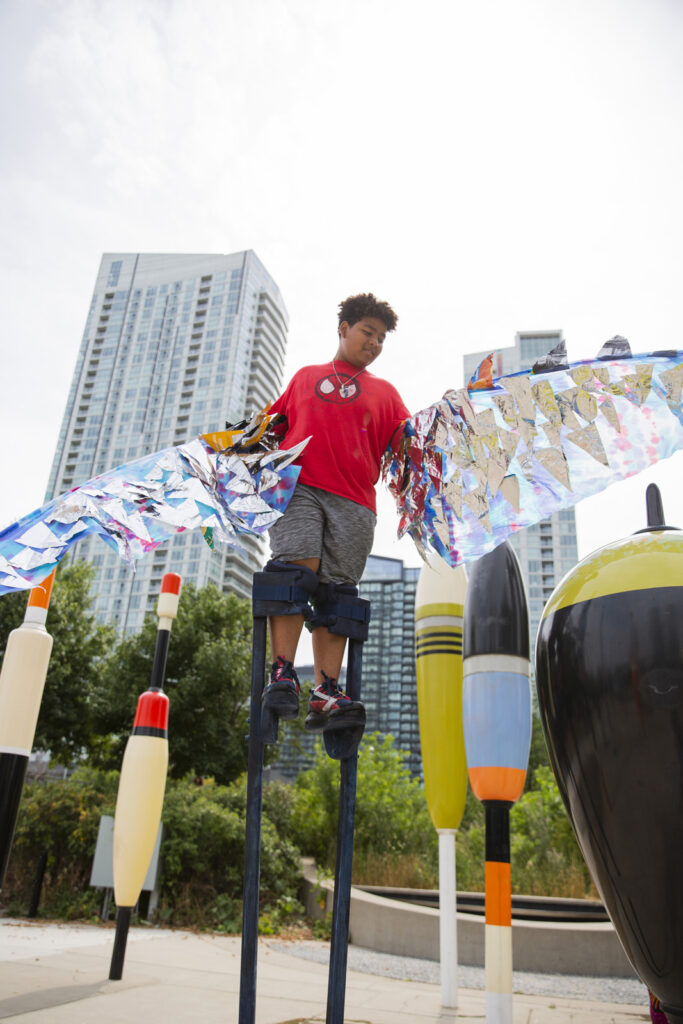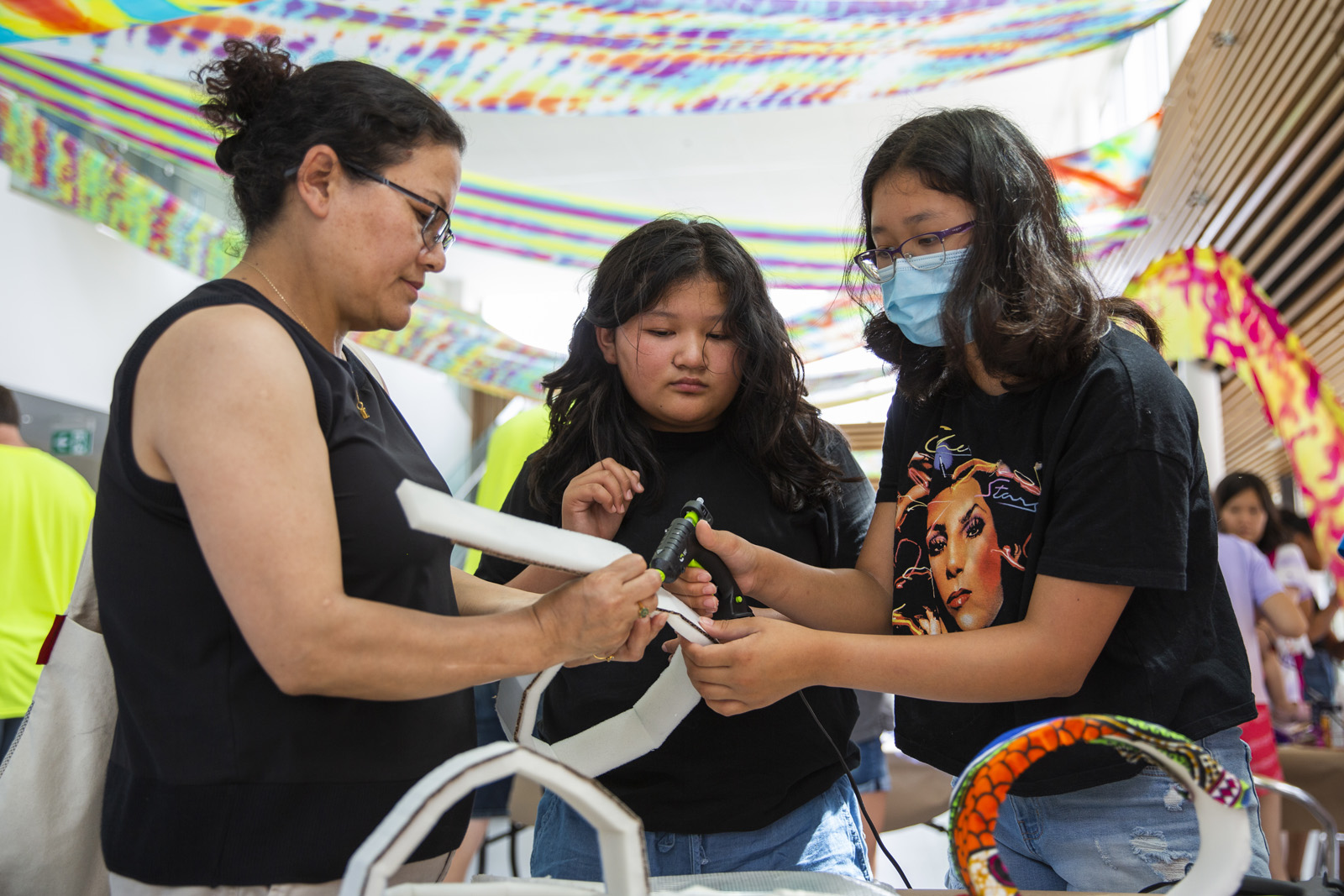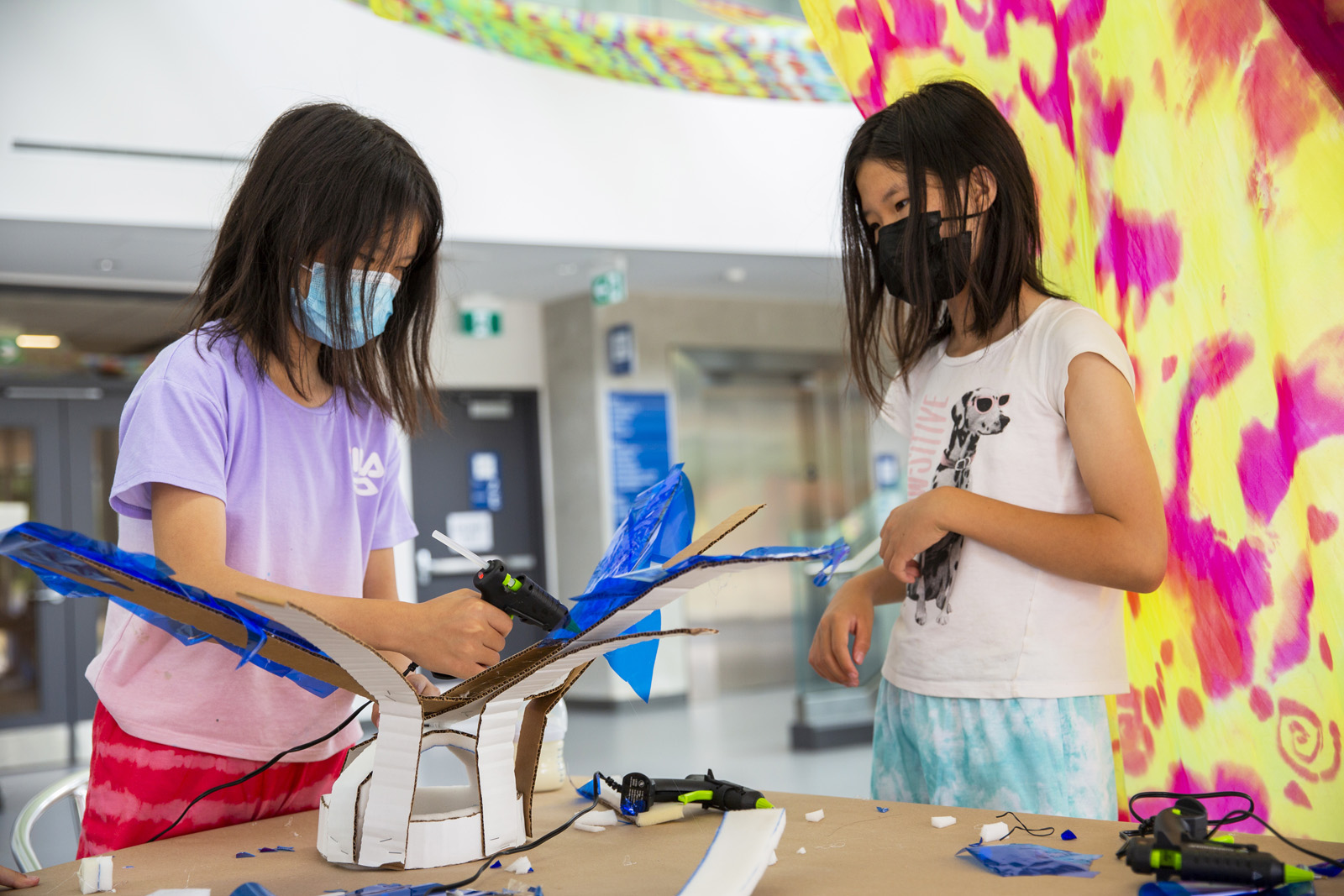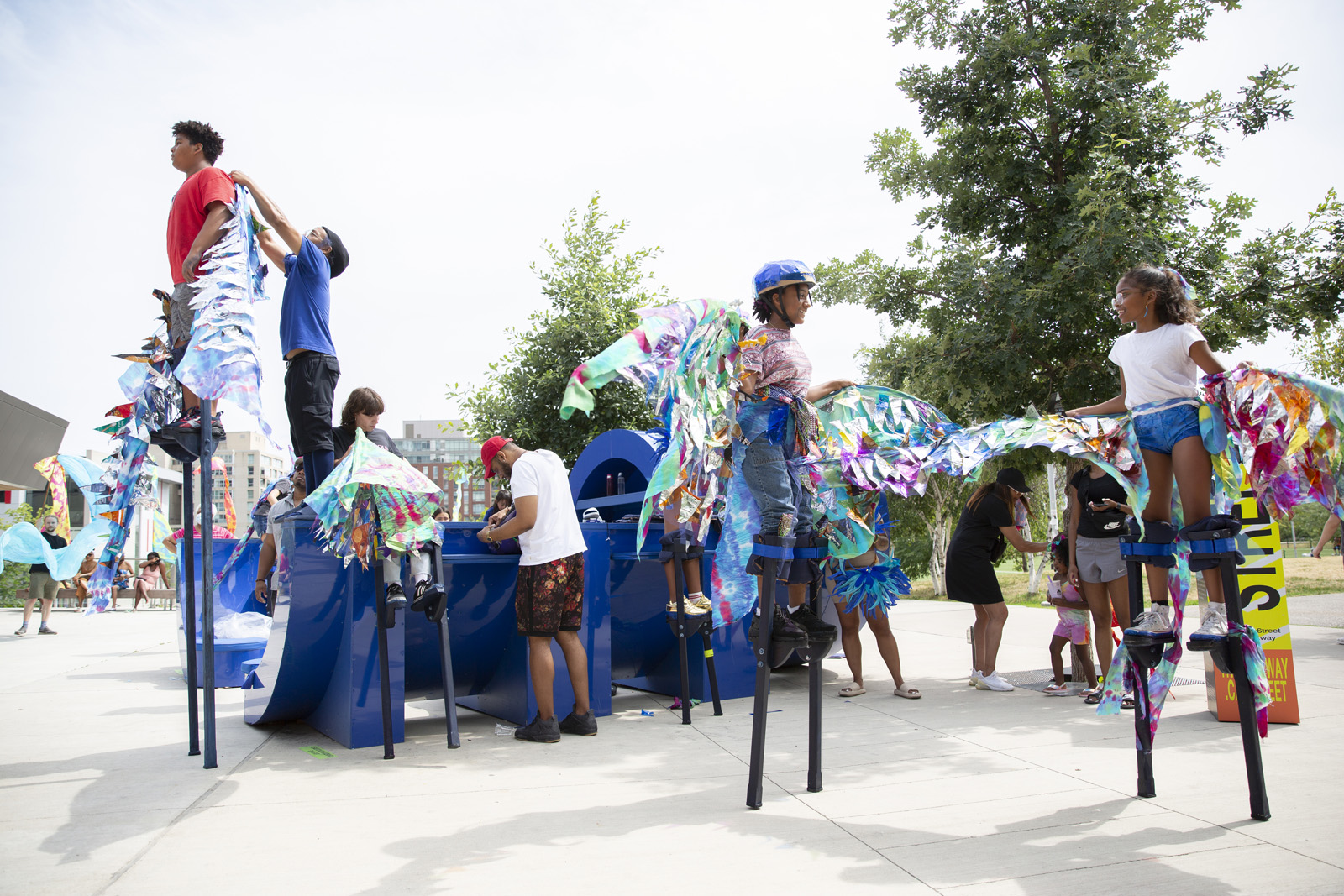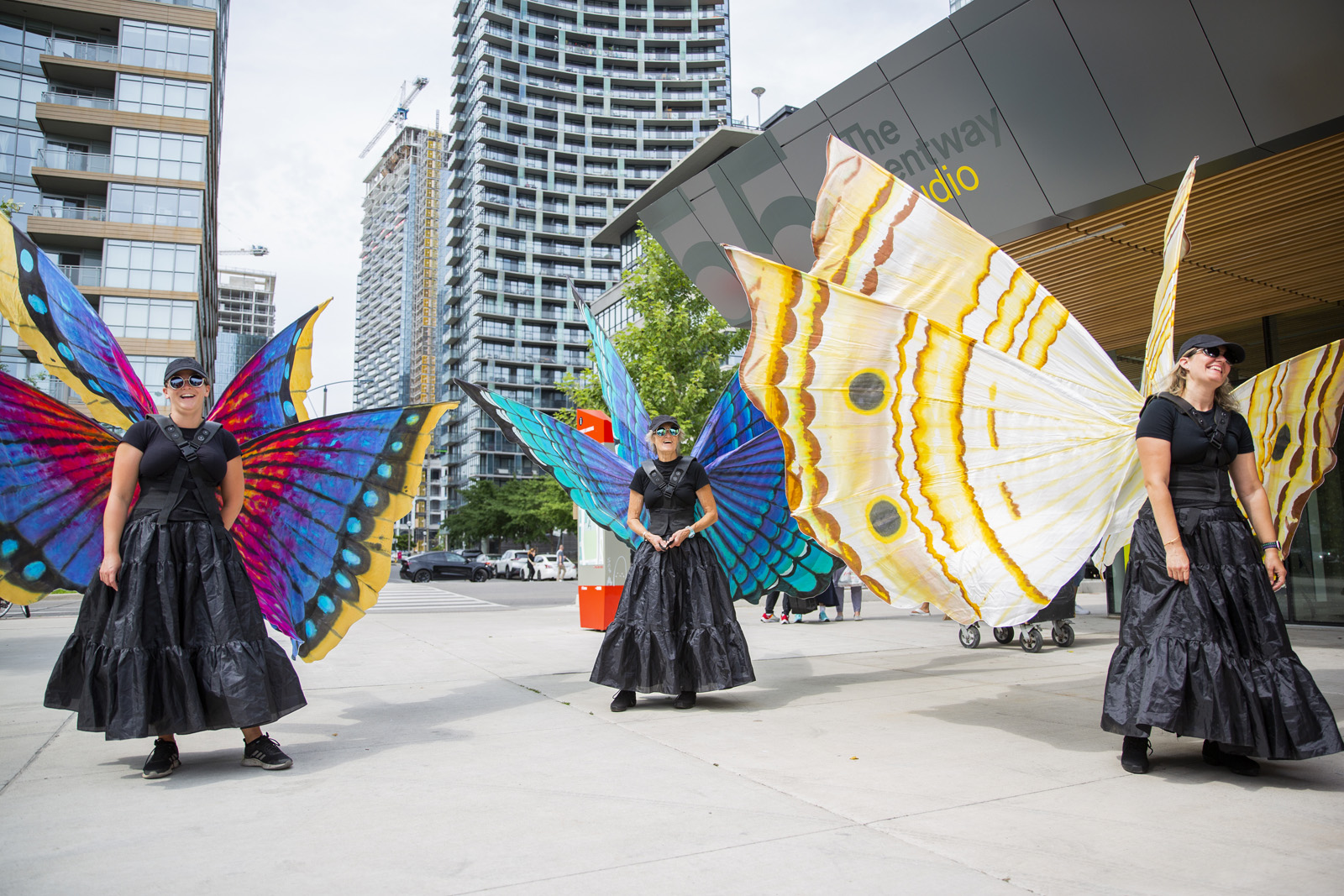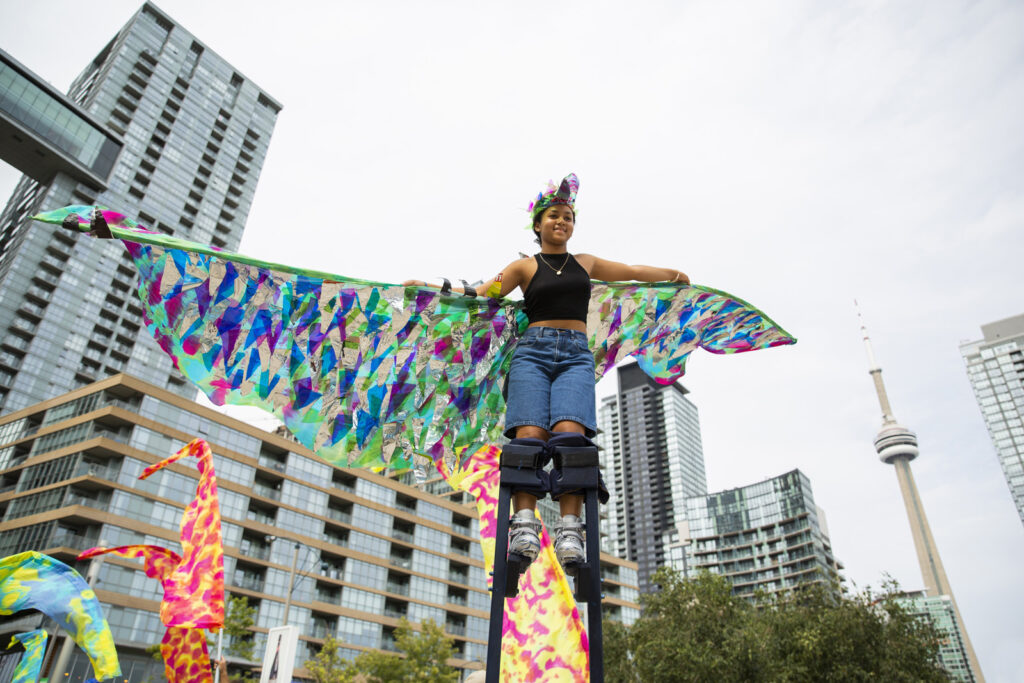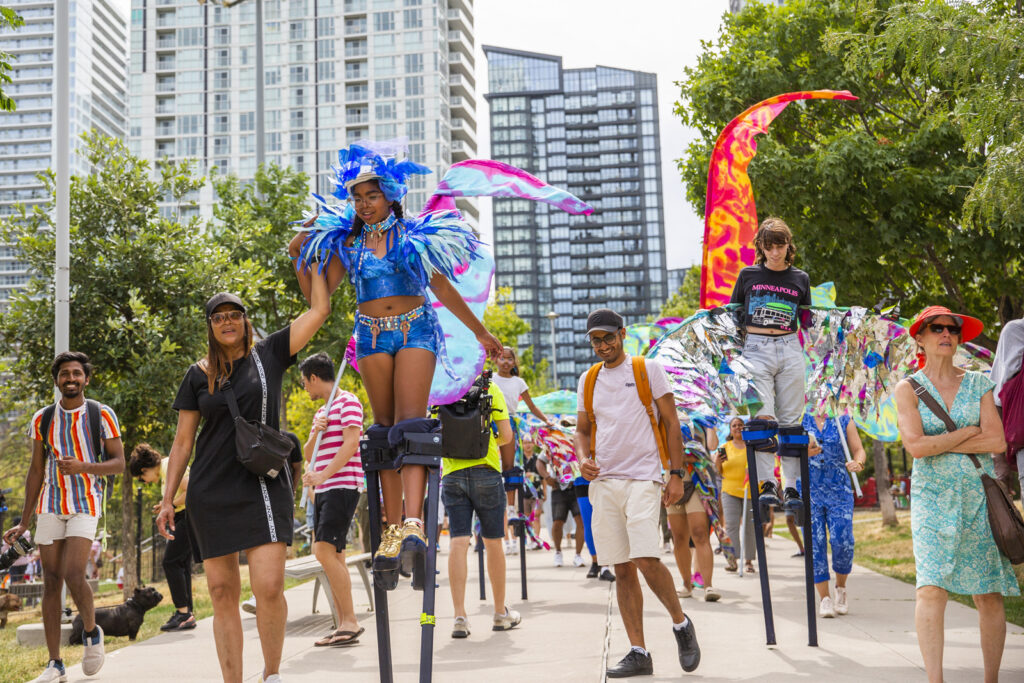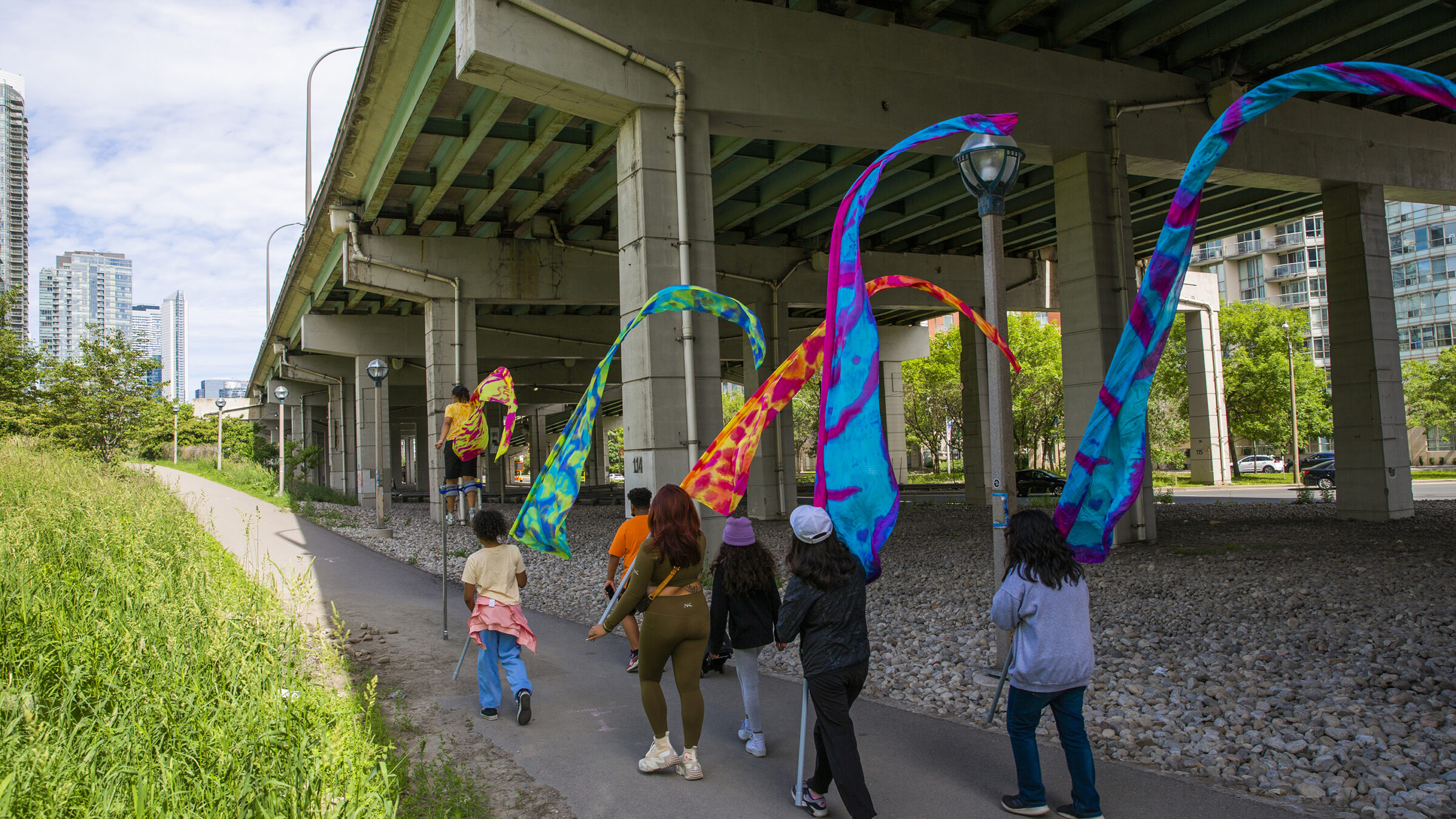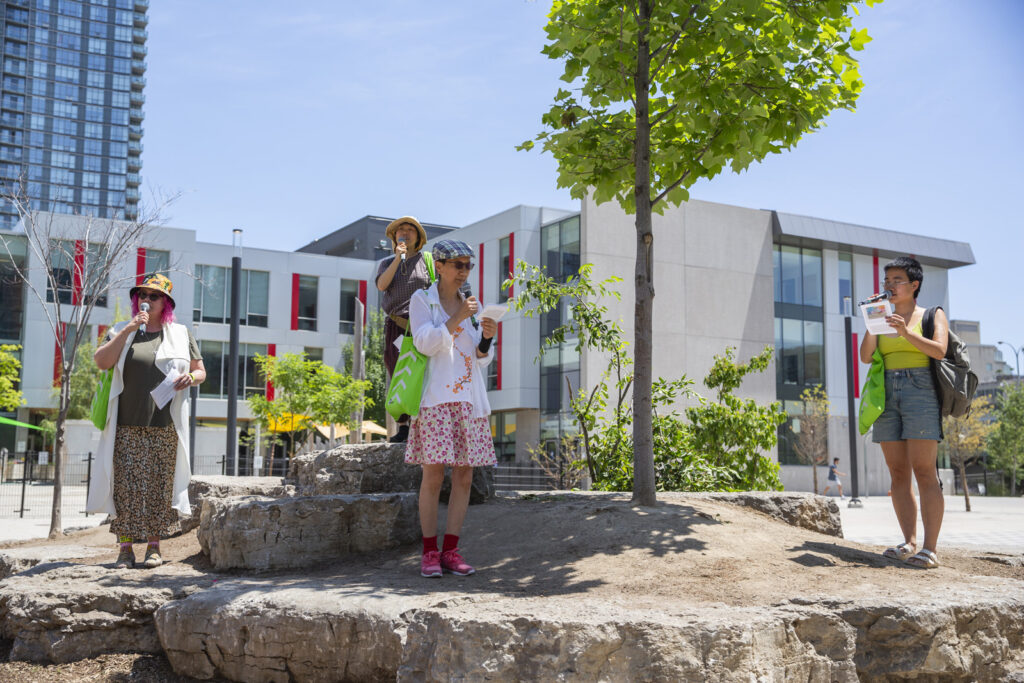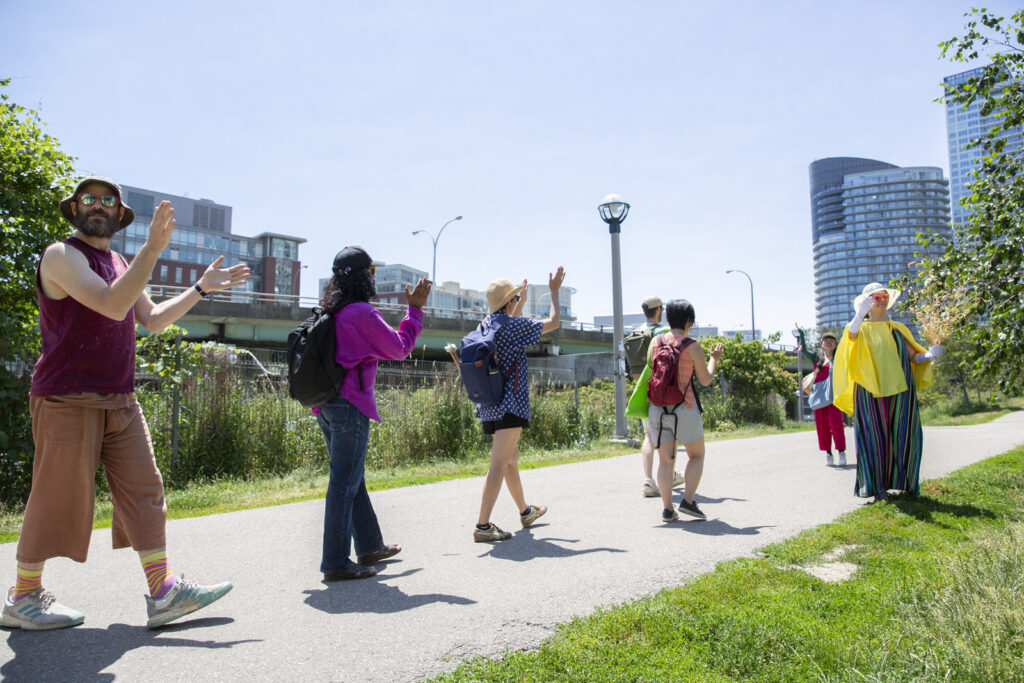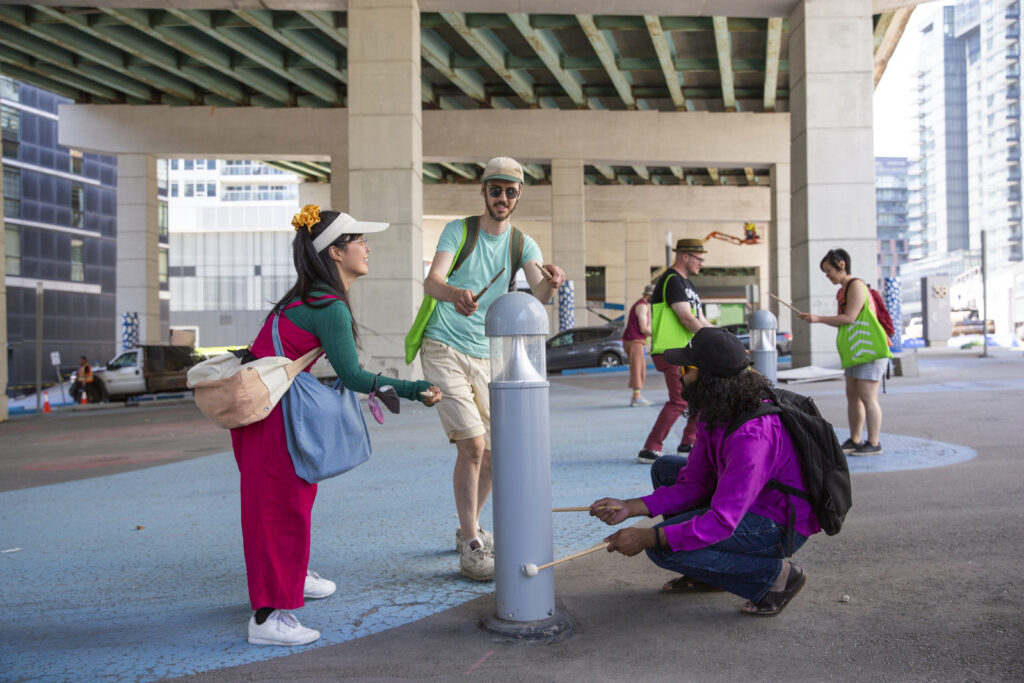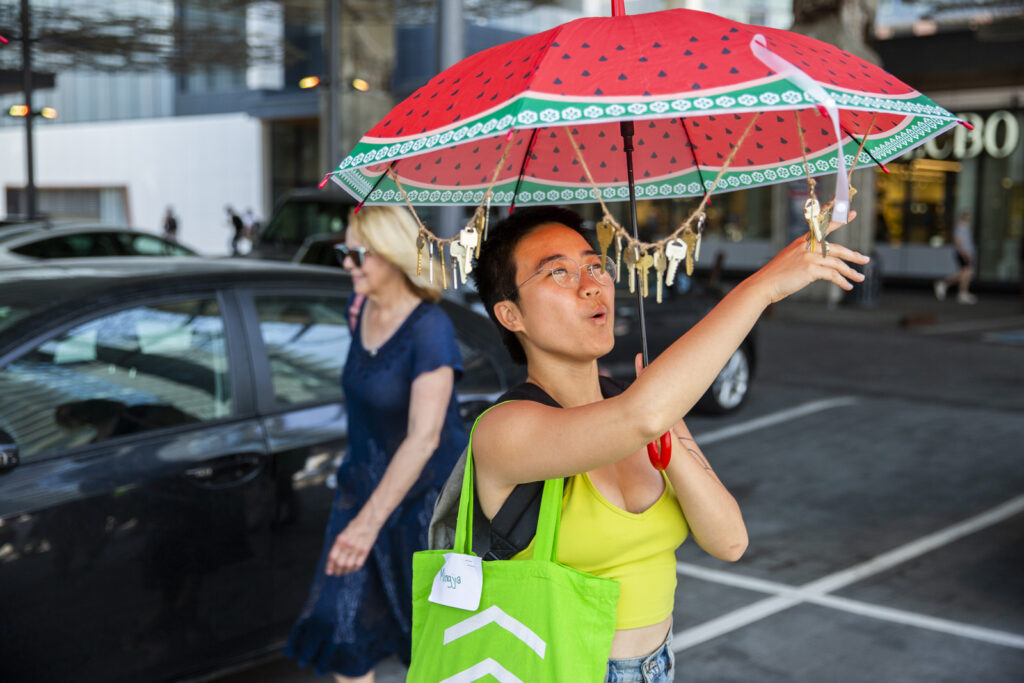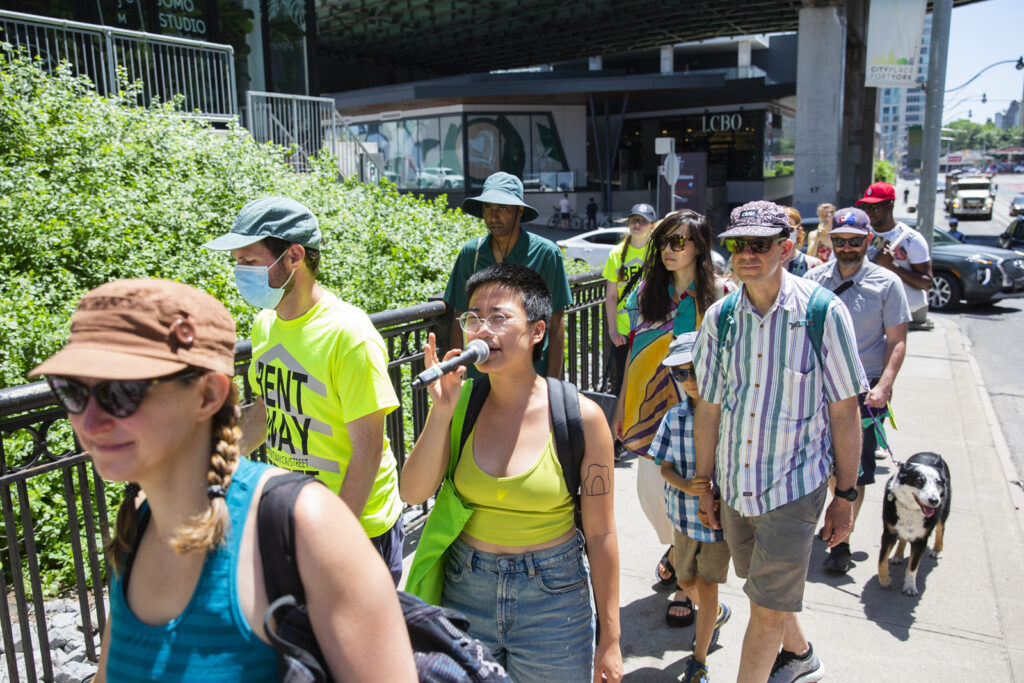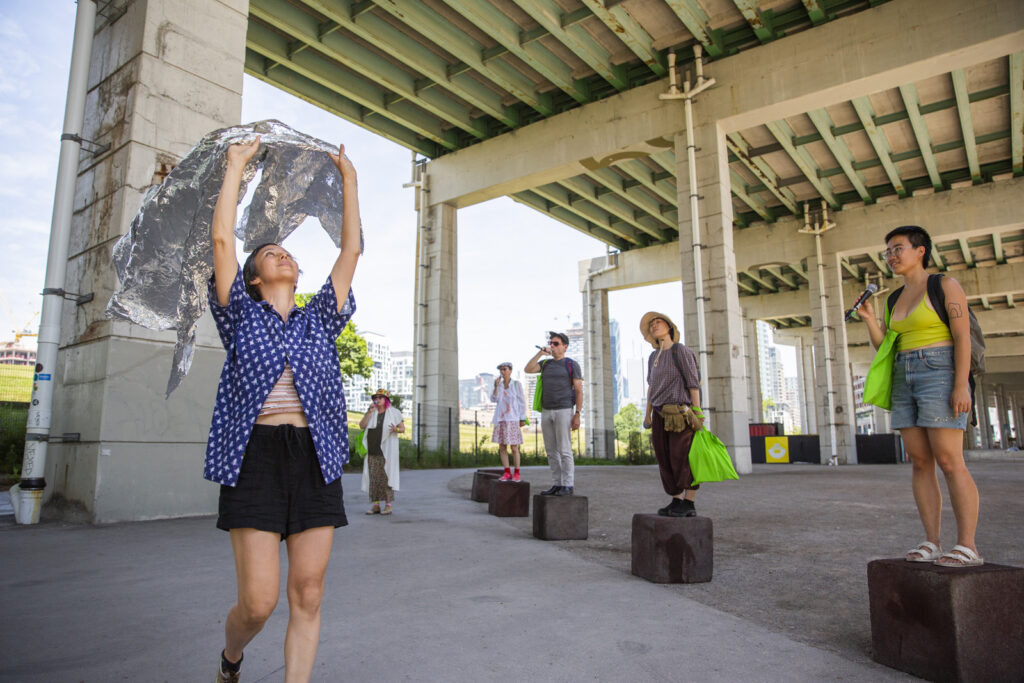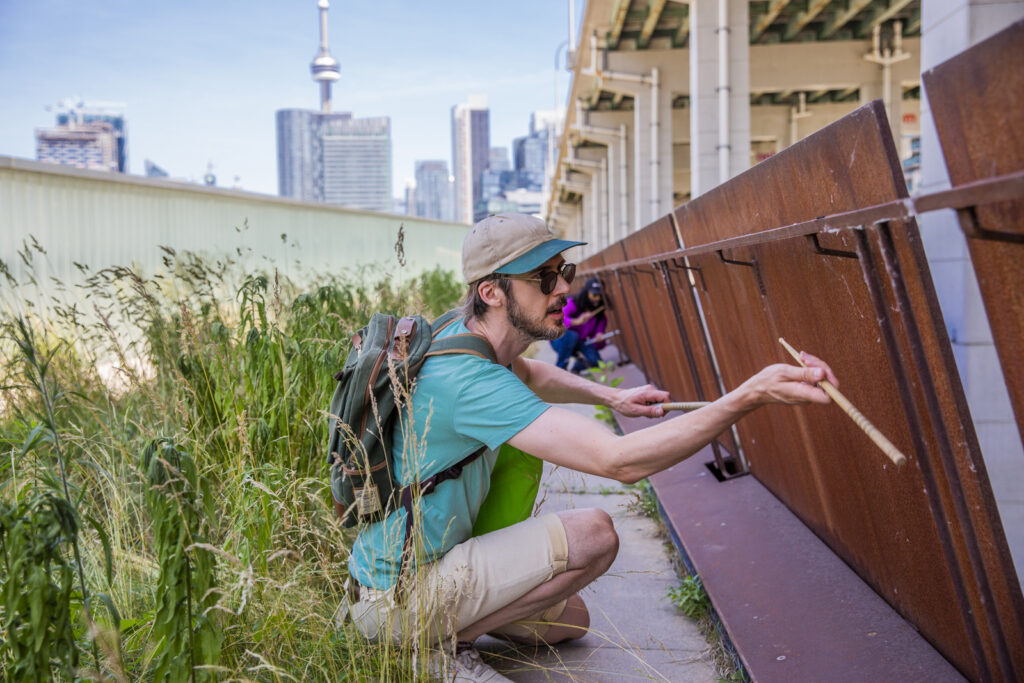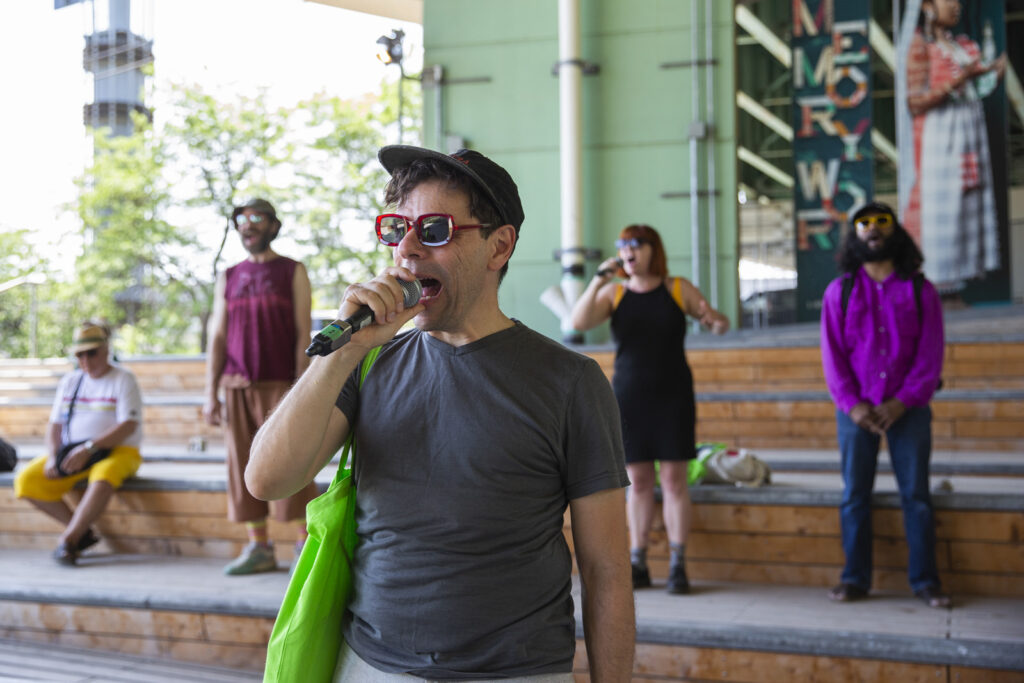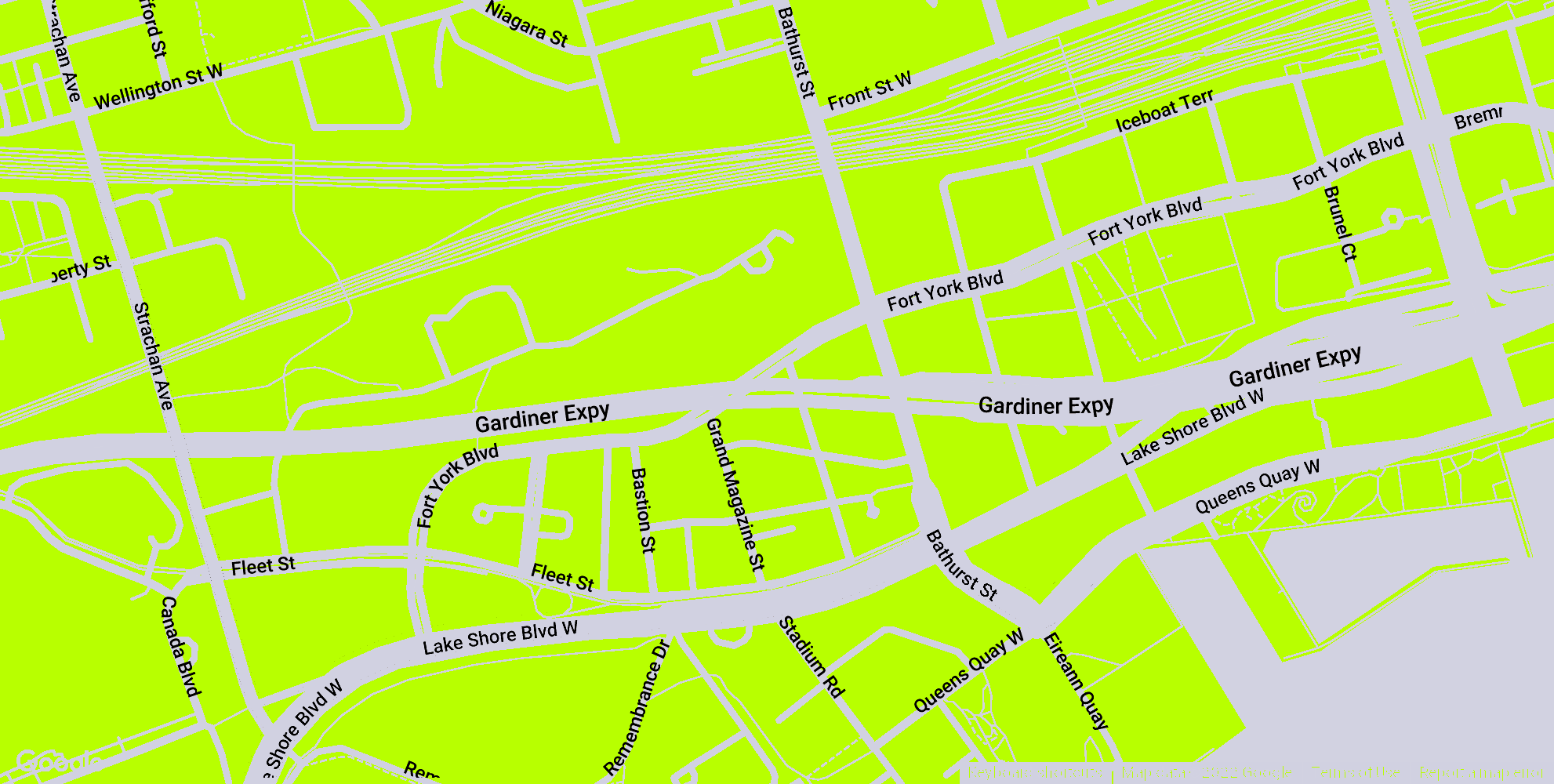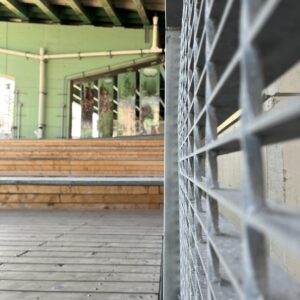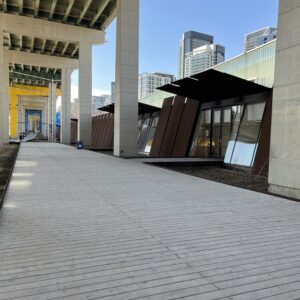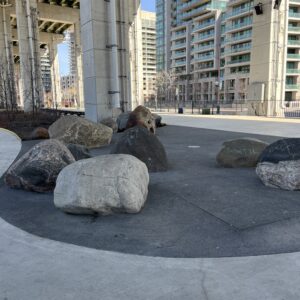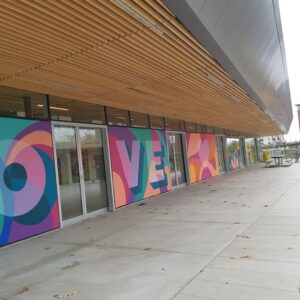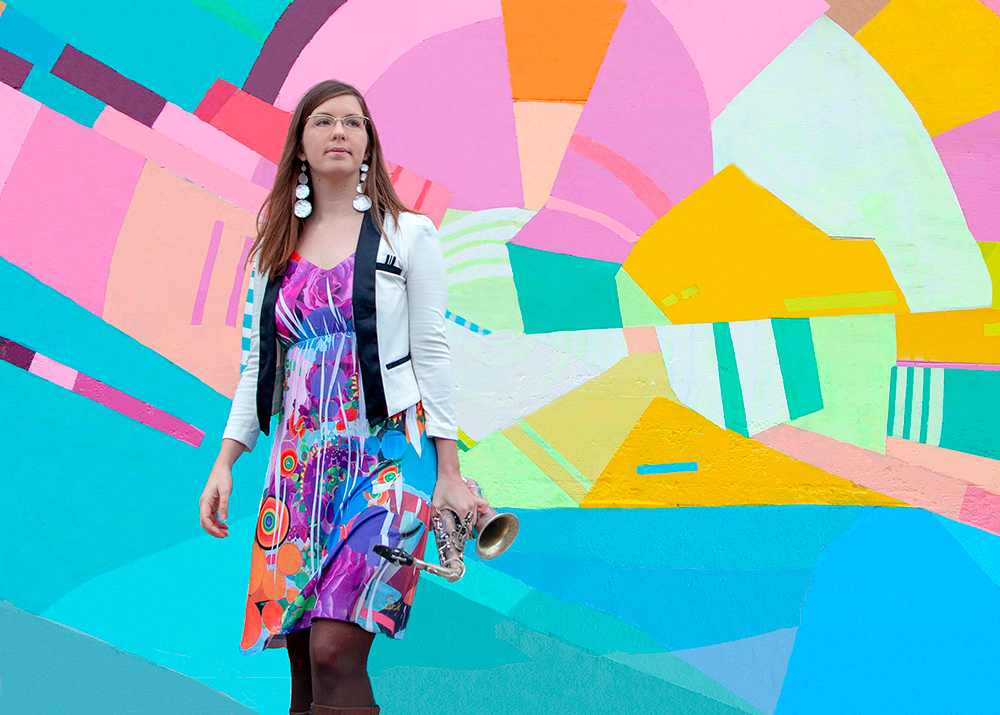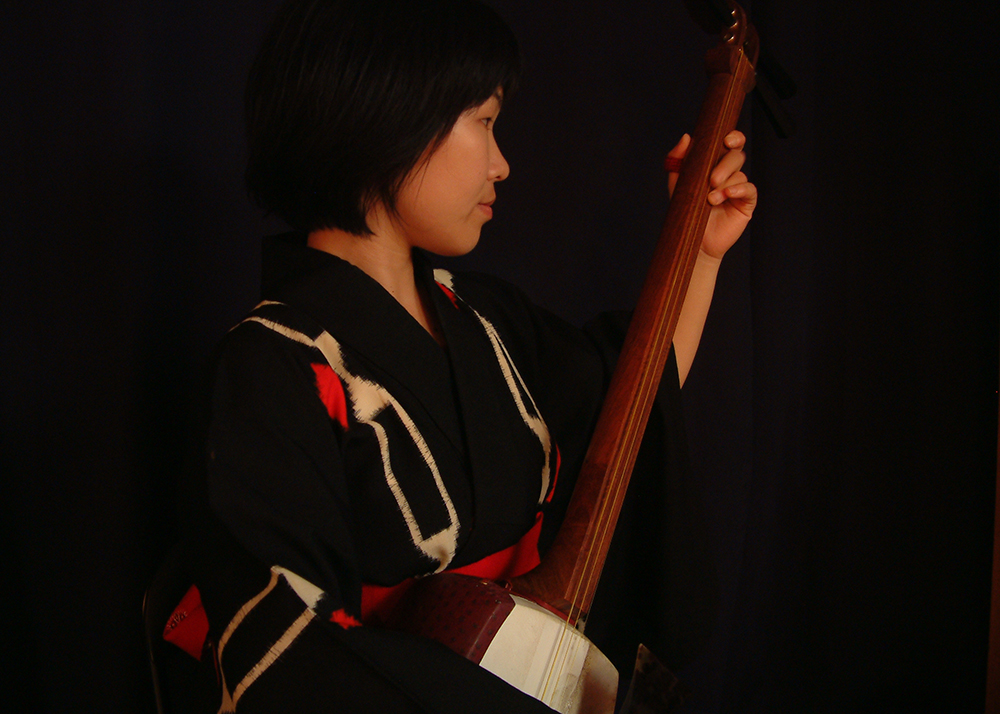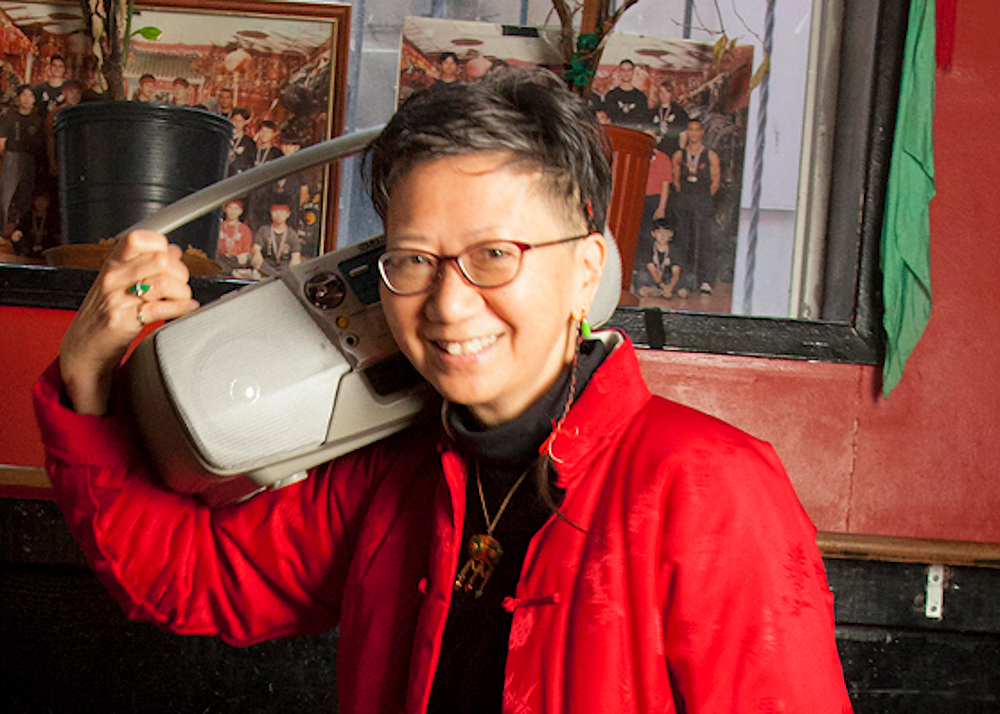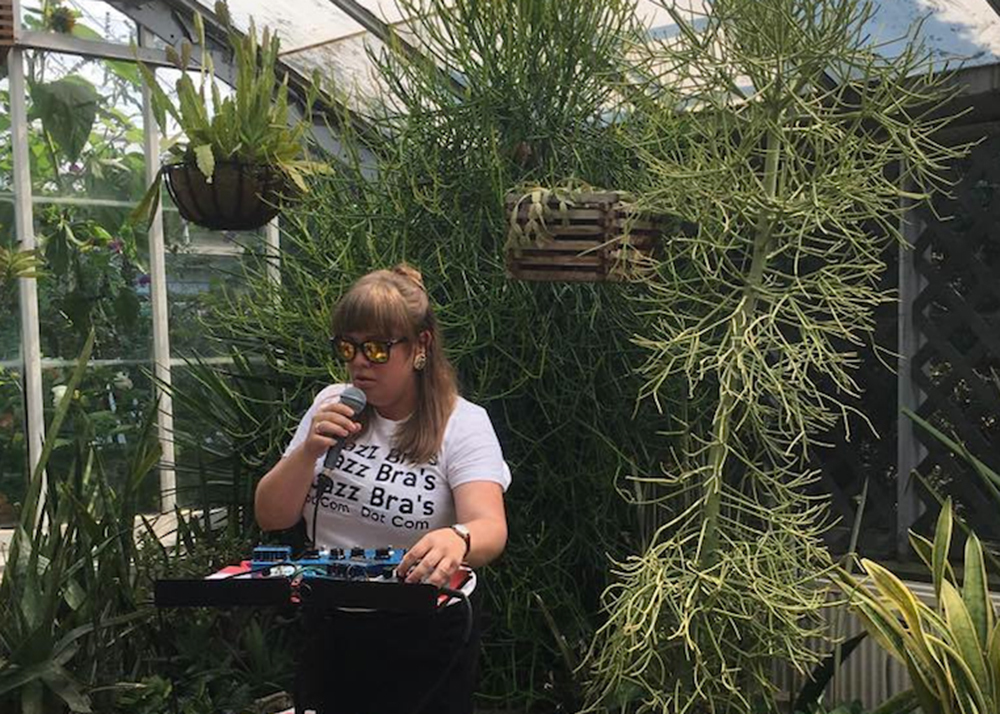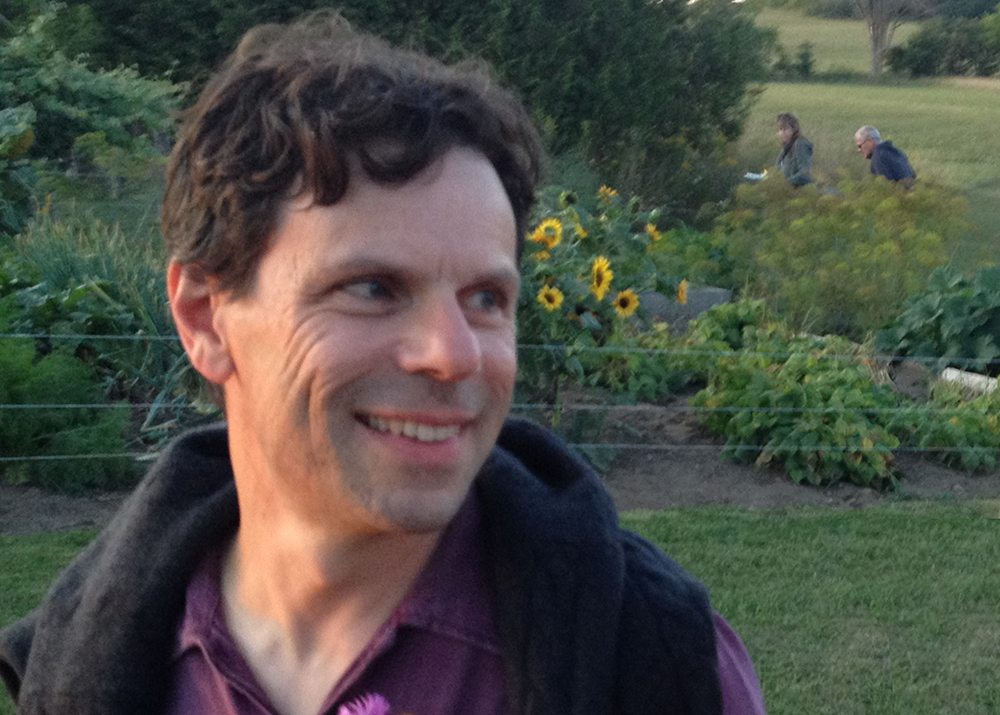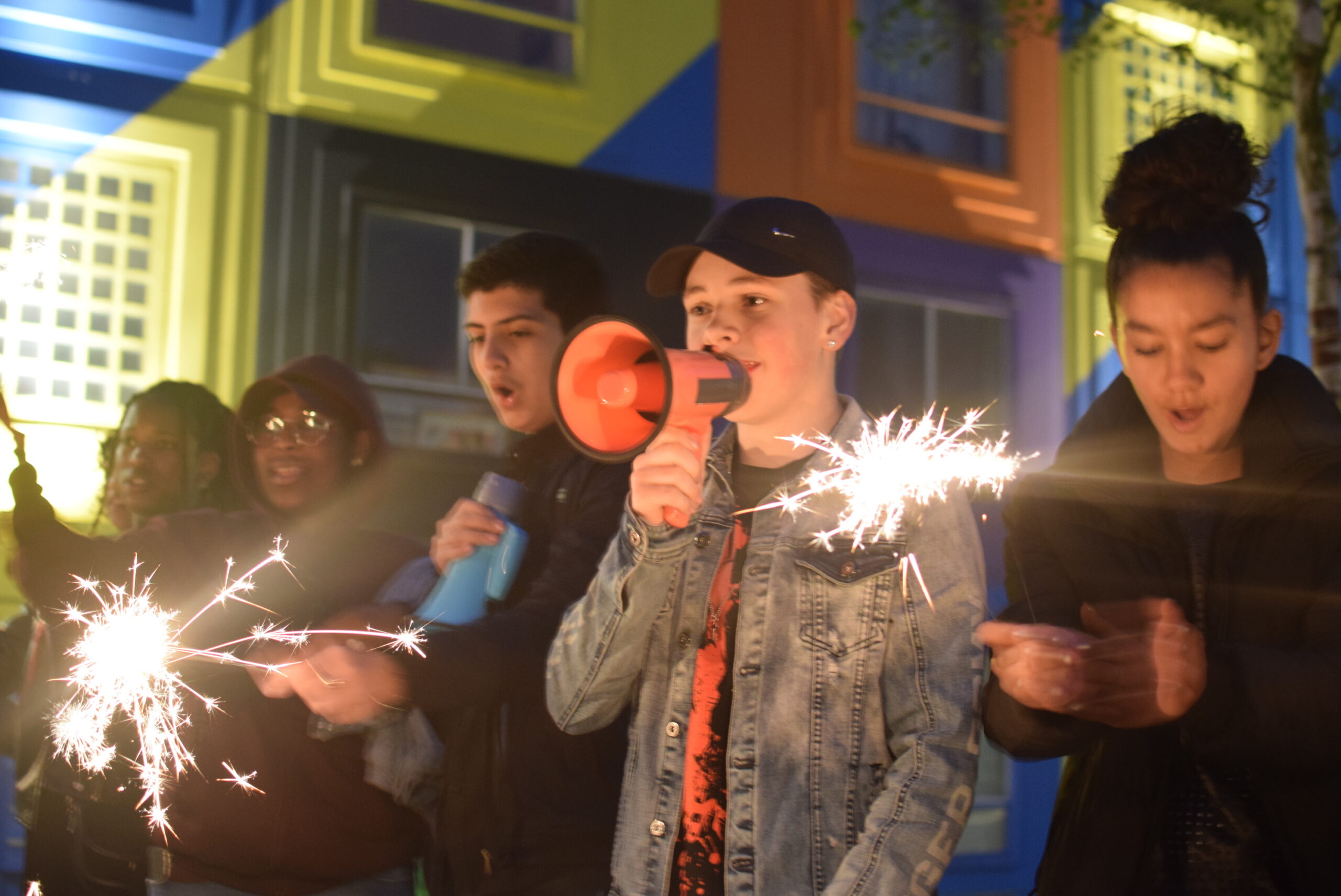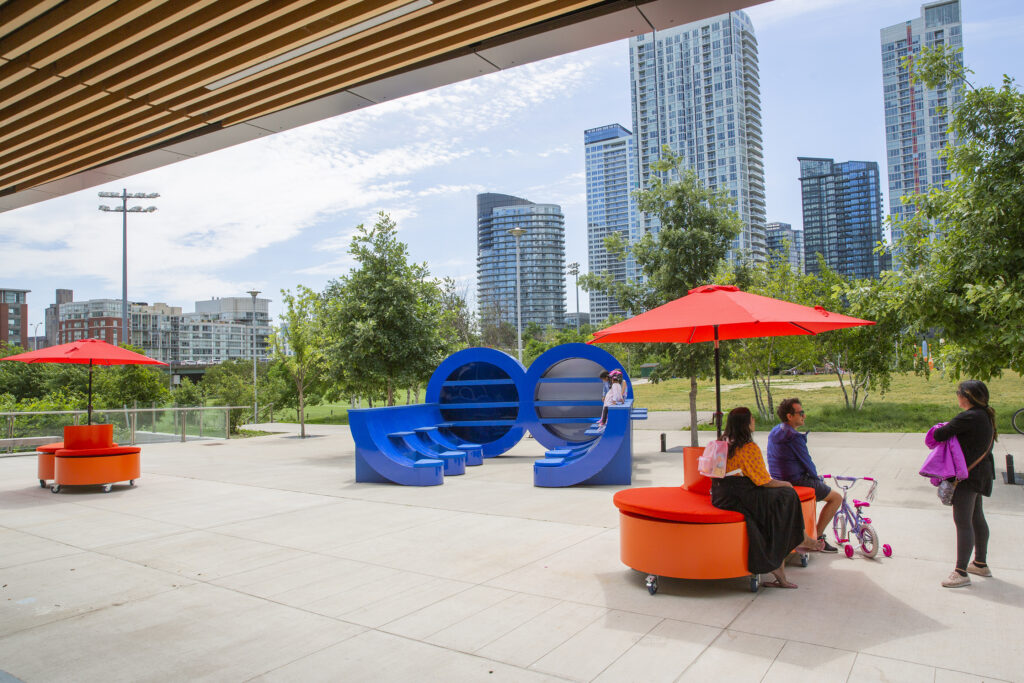The Depanneur and The Bentway are back this summer for the 4th year of diverse and delicious food events. The 2022 Communal Table series is bigger and better than ever, with 20 events running from June 16 to August 28.
Communal Picnics are pre-packaged 3-course meals for 2, 4, or 6 people. They must be pre-ordered online and will be available for pickup at the beautiful, new Bentway Studio at Canoe Landing Campus (55 Fort York Blvd), on Sunday evenings from 6:00pm-7:00pm.
You are invited to enjoy your picnic in the adjacent Canoe Landing Park, take your meal home, or to any of the scenic green spaces in the area such as the Toronto Music Garden, Little Norway Park, Garrison Common, Coronation Park, or Trillium Park.
As part of our ongoing commitment to fostering inclusion and accessibility, we will once again be sponsoring a Pay It Forward donation program to help provide fresh meals to the Spadina-Fort York Community Care Program which will be distributed to those in need in the community.
Communal Dinners are also available every Thursday night at The Bentway (250 Fort York Blvd). Click here to book your tickets with The Depanneur!
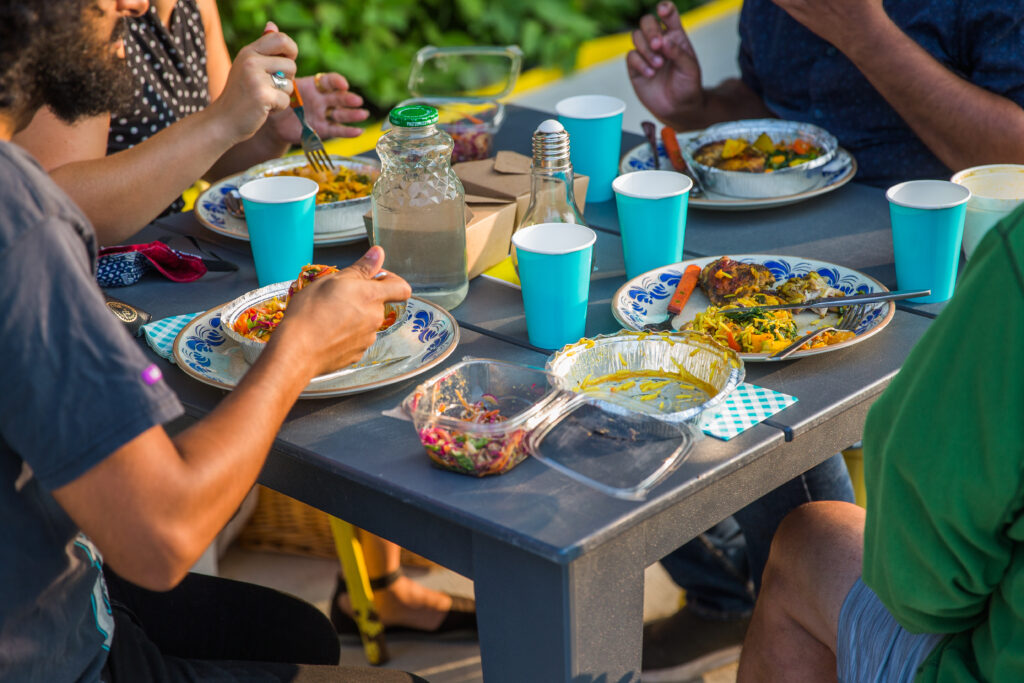
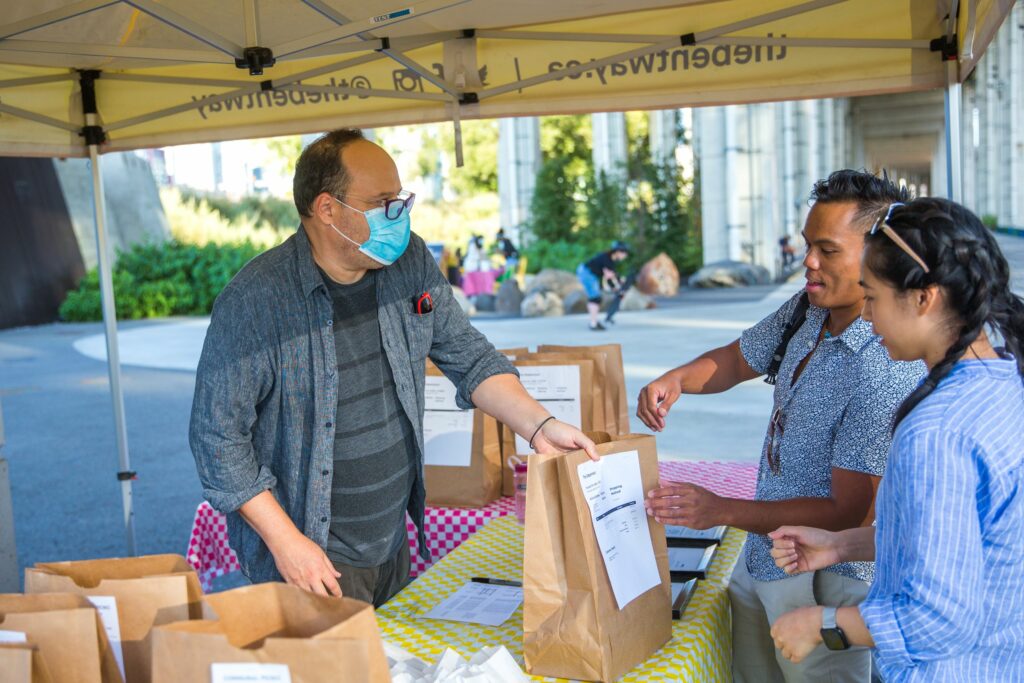
What you need to know:
- Communal Picnics will be held on Sundays from June 21 to August 23.
- Menus will be available for purchase up to 48 hours prior to pick up, or until they sell out.
- These 3-course, pre-packaged meals, are served warm and ready-to-eat.
- Picnic meals are $59 for 2, $109 for 4, and $159 for 6 (+HST); to minimize packaging and waste, single meals are not available.
- Meat and vegetarian options are available for each meal, but no substitutions or other customizations can be accommodated.
- Pick-up is rain or shine; no refunds for uncollected meals.
- Non-alcoholic beverages will be available for purchase on-site.
- Washrooms are available in the community centre which is open until 10:00pm.
- If you wish to dine nearby at Canoe Landing Park, you are encouraged to bring your own cutlery and picnic blanket.
- There are a few public picnic tables in the nearby Canoe Landing Park, and we will have some picnic blankets for sale for a $10 donation to our Pay It Forward program (while supplies last).
- Please help us keep the space clean and safe for everyone by using the garbage and recycling bins available on-site.
- This outdoor event does not have a specific mask policy, but we kindly request guests not attend if they are experiencing any COVID-related symptoms.
SCHEDULE
Newcomer Kitchen started at The Depanneur in 2016 as a grass-roots initiative to create social and economic opportunities for newly-arrived Syrian refugees. After a wildly successful 3-year pilot at The Depanneur, Newcomer Kitchen expanded to become an entrepreneurial training program aimed at helping diverse groups of newcomer women gain experience in the food sector. Global Pan is one of Newcomer Kitchen’s newest cohorts, women from around the world who have come together to share their foods and cultures with Toronto. Featuring women from Syria, Afghanistan, China, Taiwan, and a mother & daughter team from the Bahamas, this eclectic group has put together an exciting international menu for our inaugural Communal Picnic.
MENU
Muhummara + Cong Yu Bing
Muhummara is a rich, ruby-red Syrian spread of roasted red peppers, tomato paste, nigella seeds, and chopped walnuts. Served with Cong Yu Bing, flaky and delicate scallion pancakes popular in northeastern China.
Taiwanese Pickled Daikon
These delicious and crunchy pickled vegetables are a staple on tables in China and Taiwan with a sour/sweet/spicy/smoky flavour profile.
Chapli Kebab (meat)
A specialty of Pashtun cuisine, these spicy Afghan beef patties are prepared with a combination of minced beef and mutton, seasoned with ground coriander, pomegranate seeds, green chilies, and mint; served with fresh flatbread.
–or–
Macaroni Pie (veg)
A classic party dish across the Caribbean, this baked Bahamian-style macaroni and cheese is an addictive mix of crunchy top and creamy centre.
Borani Banjan
This delicious Afghan is made with slices of fried eggplant simmered in an aromatic tomato sauce topped with lashes of thick garlicky yogurt and mint.
Caribbean Citrus Salad
Crisp green lettuce with sliced citrus, tossed with a light avocado and lime dressing.
Chinese Almond Jelly
Almond jelly is a light dessert enjoyed across Asia for its cool, delicate texture. It is made with almond milk scented with ground sweet apricot seeds, set with agar agar, and topped with tropical fruit.
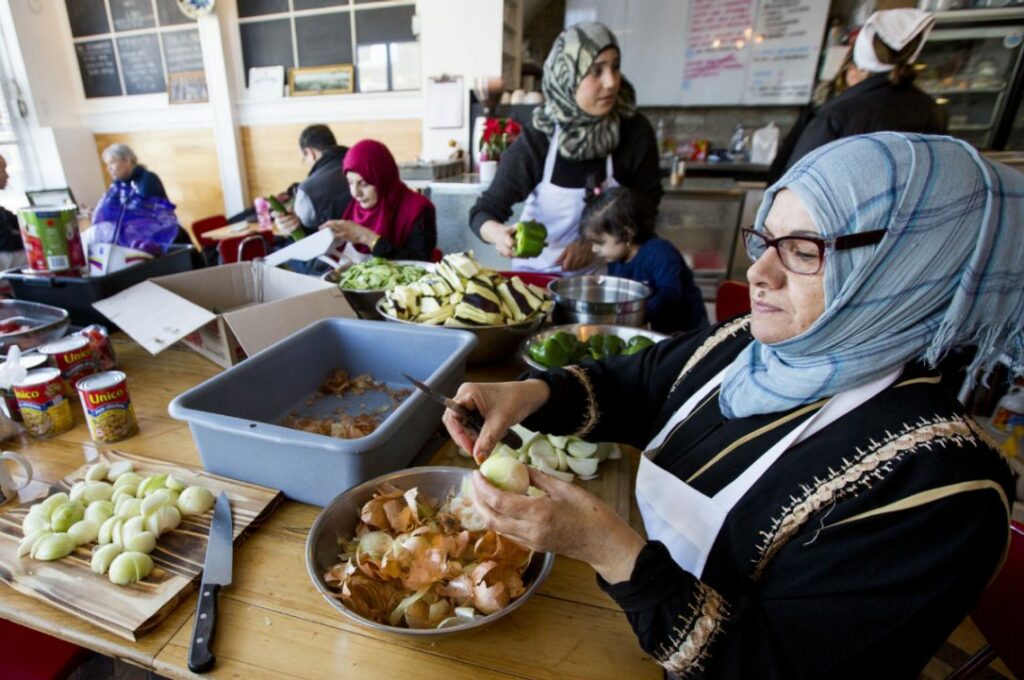
ABOUT NEWCOMER KITCHEN
Newcomer Kitchen is a nonprofit organization that seeks to create social and economic opportunities for newcomer women through food-based projects. Their goal is to create a model that can be replicated with any newcomer group, in any kitchen willing to open its doors, in any city in the world.
The Philippines is an archipelago of thousands of islands, with hundreds of unique and distinctive local cultures, along with a complex and multicultural history profoundly influenced by Chinese, Malay, Spanish, and American cultures. Yet some dishes, like adobo, have become beloved classics and are likely to be found in Filipino homes across the country. Tonight Maria Polotan of Mama Linda’s shares some of these traditional Filippino favourites incorporating fresh, local ingredients.
MENU
Corn and Black Bean Empanaditas
These “little empanadas” are a favourite hand pie in the Philippines, one can find them everywhere from street food vendors to elite social gatherings. This version features a thin, baked wheat pastry filled with fresh Ontario corn and black beans stewed in fresh tomato sauce with garlic, onion, coriander, cumin, and lime, and served with cilantro dipping sauce.
Adobo sa Gata (meat)
A coconut milk-infused stew with chicken & pork slowly cooked with garlic, soy sauce, coconut and sugarcane vinegars, black pepper, and bay leaf.
—or—
Adobong Tokwa at Kabute (vegan)
Shiitake mushroom, tofu and Asian greens braised in classic adobo seasonings.
Served with steamed bok choy, white jasmine rice and achara, a tangy pickle of green papaya, carrot, onion, garlic, and ginger.
Biko
A sticky and sweet rice cake topped with latik, a gooey coconut-caramel glaze.
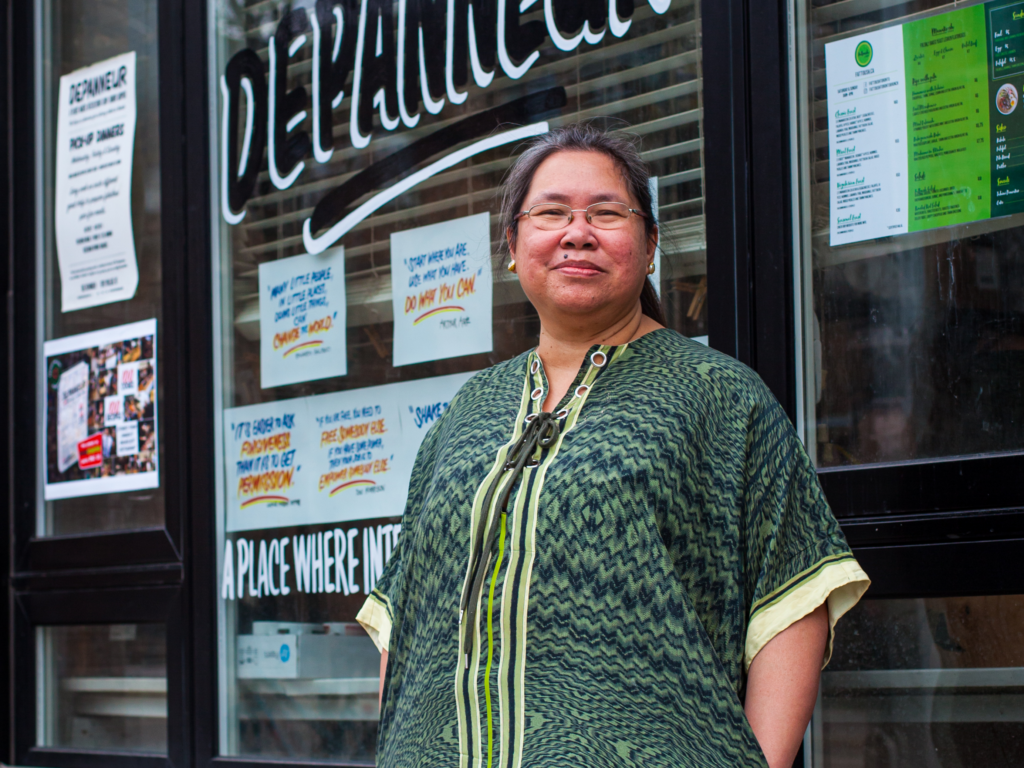
ABOUT MARIA POLOTAN
Maria Lourdes Polotan grew up in a family where food played a central part in how life was celebrated; the kitchen was where the family congregated and her mother presided. Maria has begun to share sharing her passion for food by cooking for others through her new catering project Mama Linda’s, offering traditional Filipino home cooking with quality local ingredients at pop-up events, catering, and at Withrow Park Farmers’ Market in the summer.
Long-time Dep favourite, Chef Dali Chehimi brings a mix of traditional Tunisian and Moroccan favourites to the table for a delicious tour of North African cuisine. Complex spices, lush combinations of sweet, savoury and spicy, Mediterranean ingredients, and a hint of French colonial influence make for an exquisite culinary adventure.
MENU
Omek Houria
This beloved Tunisian recipe — the name literally means your mother (omek), the fairy/angel (houria) — is a popular dish to break the Ramadan fast. A spicy starter, somewhere between a salad and a dip, it is made with sweet braised carrots combined with homemade harissa (a piquant North African chili paste), caraway, garlic and olive oil, and garnished with capers, black olives, sliced hard boiled eggs; served with pita.
Chicken Tagine with Preserved Lemons & Olives
One of Dali’s signature dishes, this chicken tagine combines the floral tartness of his homemade preserved lemons, the rich vegetal notes of cracked green olives and the warm, spicy flavours of ginger and saffron to great effect;.
– or –
Sweet Potato & Kale Tagine with Chickpeas
A healthy, modern take on Tunisian flavours, spiced with cumin, ginger, nutmeg, and a hint of curry.
Both are served with served with fluffy steamed couscous
Khobzet Hwé (Breeze Cake)
This classic Tunisian dessert of crumbled butter biscuits drizzled with strong coffee and layered with rich buttercream and almonds evokes a tiramisu, and gets its whimsical name from the cool, breezy spots where the cake would be left to chill.
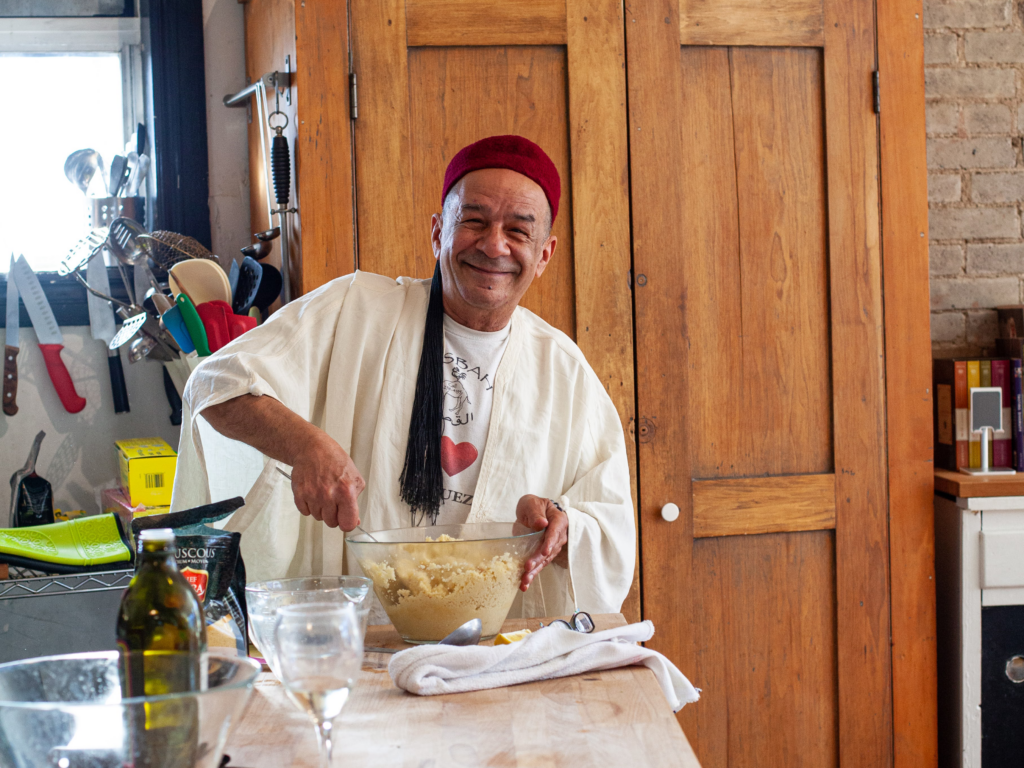
ABOUT DALI CHEHIMI
A veteran Toronto restaurateur, Dali Chehimi’s storied career has seen him working at iconic restaurants such as Sassafraz, Sarkis, and Avec, as well as running Casbah, a catering company specializing in Tunisian fare.
With more than 17,000 islands populated by more than 300 different ethnic groups, Indonesian cuisine has incredible breadth, depth and variety. Home of the original “Spice Islands”, Indonesia has been a culinary destination for centuries, sharing spices like nutmeg and clove with the rest of the world while absorbing and reimagining Indian, Chinese, Arabic, Thai and Dutch influences. Indonesian food boasts many unique flavours, textures, and ingredients worth exploring, and tonight Chef Elita of NaiNai Noodles shares a few distinctive and authentic Indonesian recipes.
MENU
Tahu Goreng
This fried tofu snack is all about the delightful contrast between the crispy golden exterior and the soft, creamy interior; served with a sweet soy dipping sauce and small green chilli.
Rendang Daging (beef)
In a 2011 online poll held by CNN International, beef rendang was chosen as the number one dish of the ‘World’s 50 Most Delicious Foods’. Beef Rendang is a style of curry-like stew originating from the Minangkabau region in West Sumatra. It is characterized by a long, slow cooking in coconut milk almost like a confit. The spices used, lemongrass, garlic, chili, shallot, ginger and galangal, also have antimicrobial properties and act as natural preservatives. A popular but labour-intensive dish, it’s often reserved for special occasions.
–or–
Rendang Tempeh (vegan)
Tempeh, a traditional Indonesian food made by the controlled fermentation of soybeans into a firm cake, works beautifully with the richness of reduced coconut milk and deep & complex flavours of the rendang spices.
The meal is served with with jasmine rice, a coconut & long bean stir fry, and terong balado, a dish of eggplant glazed in a spicy chilli sambal with shallots, garlic, tomatoes and lime leaf.
Singkong Lumer
Cassava pudding made from grated cassava cooked with palm sugar, pandan leaf and topped with creamy coconut milk sauce; a luscious mix of sweet & salty.
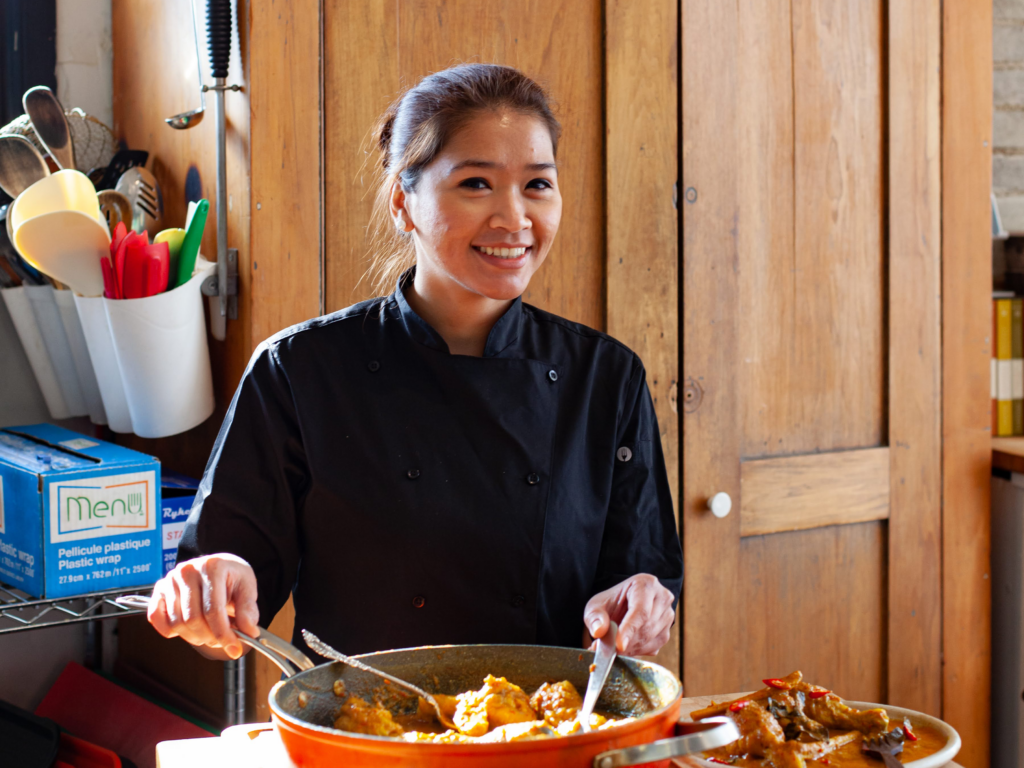
ABOUT ELITA ROCKA
Chef Elita learned her craft from several generations of family chefs; her grandmother founded a popular noodle restaurant in Central Jakarta that has been a local staple for over three decades, and now owns a noodle factory in Indonesia. Her Mother continued the restaurant business with Elita at her hip. Those indelible experiences have inspired Elita to bring her own authentic Indonesian meals to Toronto. As a food entrepreneur, she has catered for the Indonesian embassy and most recently launched NaiNai Noodles, an Indonesian noodle bar and take-out restaurant on King Street West.
Turkey has an ancient culinary tradition stretching back to the very beginnings of Western civilization. From these deep roots the Ottomans developed a sophisticated and aristocratic cuisine based on ingredients and influences pulled from an empire that stretched from North Africa across the Middle East and into Greece and the Balkans. The flavours of contemporary Turkish food emerge from this mix of cultures and traditions, and shine in Chef Tuba Tunç’s selection of traditional Turkish dishes.
MENU
Mercimek Kofte
This ancient dish is the Ottoman version of “Beyond Meat”, a vegetarian version of a popular çiğ köfte traditionally made with raw meat. Here lentils and bulgur wheat are combined with green onions, parsley, cumin and biber salcasi (a rich and slightly spice Turkish tomato and pepper paste) into savoury little mouthfuls, served with fresh greens.
Dolma (beef -or- vegetarian)
Stuffed vegetables – in this case red peppers & zucchinis – can be found in virtually every cuisine around the Mediterranean. They are a common dish in Turkish households, where they are known as dolma, meaning ‘stuffed’ — and for good reason: they are a delightful little self-contained meals with vegetables, rice, and beef (or currants, cinnamon and a generous helping of olive oil for the vegetarian recipe), herbs and spices all combined. This version uses thick potato wedges hold up the peppers while they cook, which then soak up all the delicious cooking juices and help thicken the tomato-y sauce. Served with a thick haydari sauce of pressed yogurt, garlic and dill.
Revani
A lemon-scented, syrup-soaked semolina cake similar to Arabic basbousa or namoura.
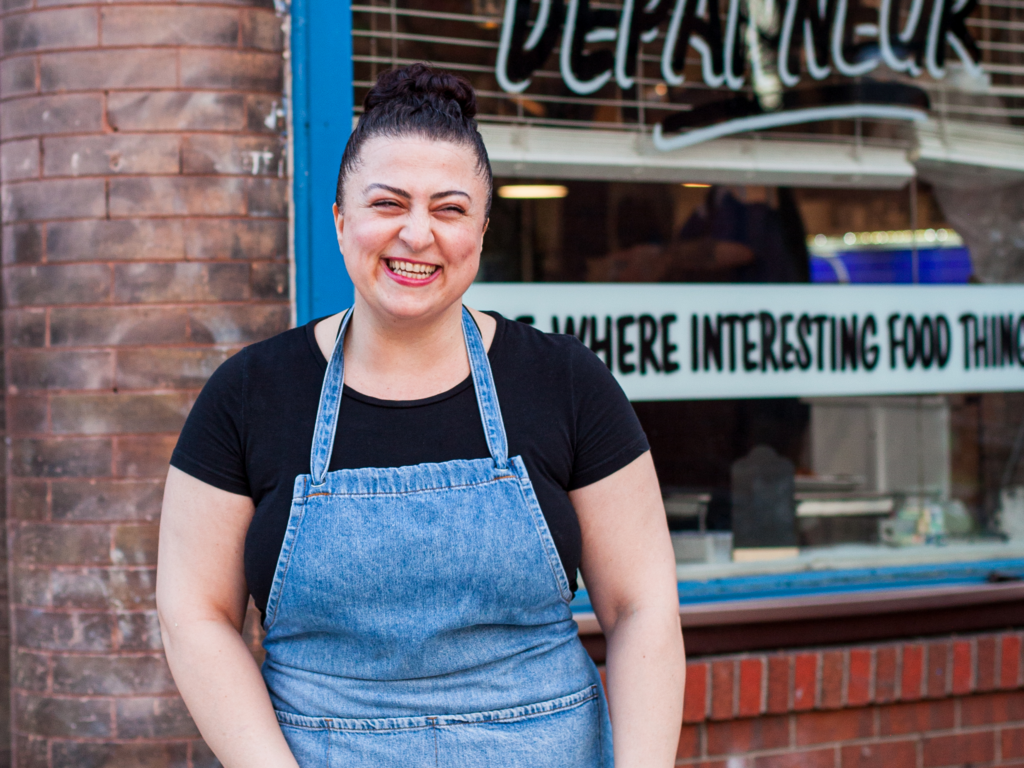
ABOUT TUBA TUNç
Tuba Tunç was a marketing professional in Istanbul for 10 years, but her true passion has always been cooking. Through countless dinner parties for friends and family, she came to realize that she needed to follow this passion and turn it into a career. Since graduating from the Culinary Management Program at George Brown College, she has worked in various positions at restaurants including managing Anatolia, one of the oldest Turkish restaurants in Toronto. Tuba has recently founded LokumEats, where she showcases Turkish & Ottoman cuisine, as well as her take on international cuisines.
Paella is often thought of as the Spanish national dish, but it is really a speciality of Valencia, though it has countless regional variations. This classic rice dish has five key ingredients: short-grain rice, saffron, pimentón (smoked paprika), olive oil, and the large, shallow paellera pan from which the dish gets its name. José Arato, owner and Head Chef of Pimentón, will be preparing his paella live on-site in his giant 100 cm wide paellera!
MENU
Arugula, Chèvre & Beet Salad
Fresh and colourful, this classic combination of flavours is finished off with a mix of toasted seeds for a bit of crunch, and a side of crusty bread.
Chicken & Chorizo Paella
One of José’s signature dishes, this delicious paella features fresh chicken and paprika-infused Spanish chorizo sausage, with onion, garlic, tomatoes, green peas and red peppers, all cooked together with short-grain rice in a saffron-scented sofrito and rich chicken stock.
Also available vegetarian: lima bean, chickpeas & peppers paella prepared with a saffron-infused vegetable stock
Crema Catalana
A traditional Spanish dessert similar to creme brûlée, but cooked on the stove instead of the oven. Crema catalana uses citrus peel and sometimes cinnamon to flavour the custard, and the crisp sugar crust is traditionally caramelized using a special small round hot iron. *Contains dairy, eggs
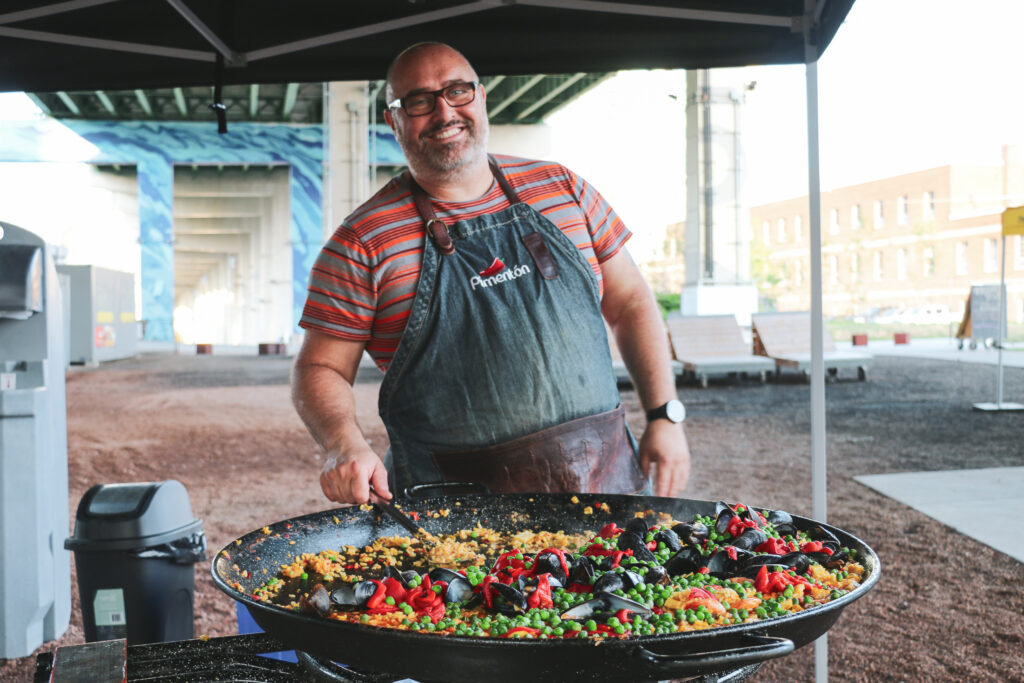
ABOUT JOSE ARATO
Chef José Arato is the owner and Head Chef at Pimenton, a Toronto catering and gourmet food project specializing in Spanish and Mediterranean fine food.
Chef Candace — whose name is Nawatiin Kwe, meaning Calm Water Woman — is an Anishinaabe entrepreneur from Aundeck-Omni-Kaning on Mantoulin Island. Her passion for food started as a child, and continued to grow over the years as she helped prepare foods for lunches, events, and ceremonies in her community. An interest in wellness and nutrition, emerging from more than 10 years as a frontline worker, also informs her approach to sourcing and preparing healthy, local, seasonal foods. Chef Candace has prepared this meal to share with us, inspired by the traditional foods and connection to the land of her First Nation family.
MENU
Venison chili with baked scone
This venison chili combines ingredients whose history lies at the heart of American indigenous foodways — tomatoes, chiles, and beans — with local ground venison, vegetables, and spices, to create a hearty bowl of comfort food. Served with a baked ‘scone’, a lighter version of simple flatbreads like bannock, and served with delicious maple butter.
Also available vegetarian.
Garden Salad
Fresh and summery mixed greens with carrots, cucumbers, and cherry tomatoes, dressed in Chef Candace’s signature vinaigrette.
Wild Rice with Berries
Wild rice (manoomin in Ojibwe) was a staple for many Canadian First Nations for centuries. A highly nutritious alternative to domesticated rice (to which it is not related), it contains twice the protein as brown rice and is an excellent source vitamins and minerals. This nutty, organic, wild rice is hand-harvested in Saskatchewan, and served with yogurt, summer berries, and local maple syrup for touch of sweetness.
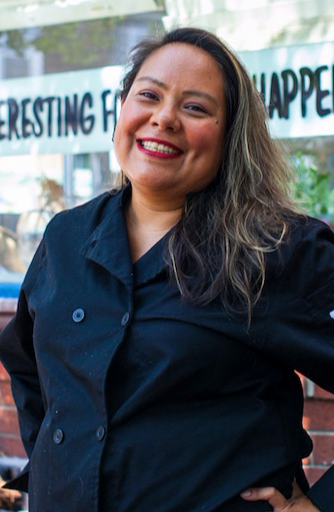
ABOUT CHEF CANDACE
Chef Candace is an Indigenous entrepreneur who has worked in the Indigenous community as a frontline worker over the last fifteen years. Candance’s Catering was born out of a lifelong passion for food and has become another way to serve her community. Ceremony and connection to the land is a big part of her life, and her family’s life as Anishinaabe people. Her dream is to travel North America and beyond to build relationships with communities, gain knowledge about food, plants and medicines, and share these stories and her knowledge with the world.
Momos — hearty dumplings of simple dough wrapped around delectable fillings, served steamed or fried with spicy sauce — are probably Tibet’s best known culinary export. In fact, momos are well-loved in many of the countries around the Himalayas, with countless variations in ingredients, appearance and names. But especially in Tibet, momos are not just food; they are also symbols of festivity and celebration. They are served during important social occasions like marriages, New Years and other special family gatherings. Join Tsewang & Lhundup of TC Tibetan MoMo, for a taste of traditional Tibetan fare, all made with local, organic ingredients sourced directly from the Ontario farmers they work alongside at several of Toronto’s farmers’ markets.
MENU
Laping
A cool, refreshing summer dish of chilled, hand-cut mung bean noodles dressed with homemade chili oil.
Kotey Momos 6pc per person
These momos feature an organic flour dough that is elegantly shaped by hand, then steamed and pan-fried for an extra special bit of golden crust!
Beef with local beef & onions –or– Vegetable with cabbage, carrots, spinach, leeks, potato & garlic
Served with Drang Tsal (tangy pickled cabbage salad), soy dipping sauce, and TC’s fabulous homemade hot sauce.
Khabsay
These lightly-sweet, crispy, fried cookies are traditionally served as part of a Tibetan New Years celebration.
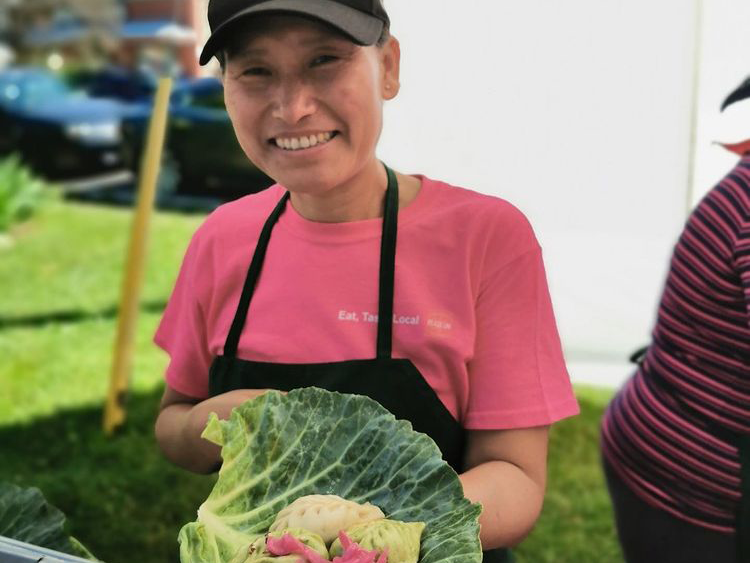
ABOUT LHUNDUP & TSEWENG
TC’s Tibetan MoMo is a small food business, serving Tibetan food MoMos(Tibetan Version of Dumplings)in Beef and Vegan in various Farmer’s Market in Greater Toronto Area. We use local ingredients in our food and organic white flour as wrapping.
Check back for the full menu… Details to follow!
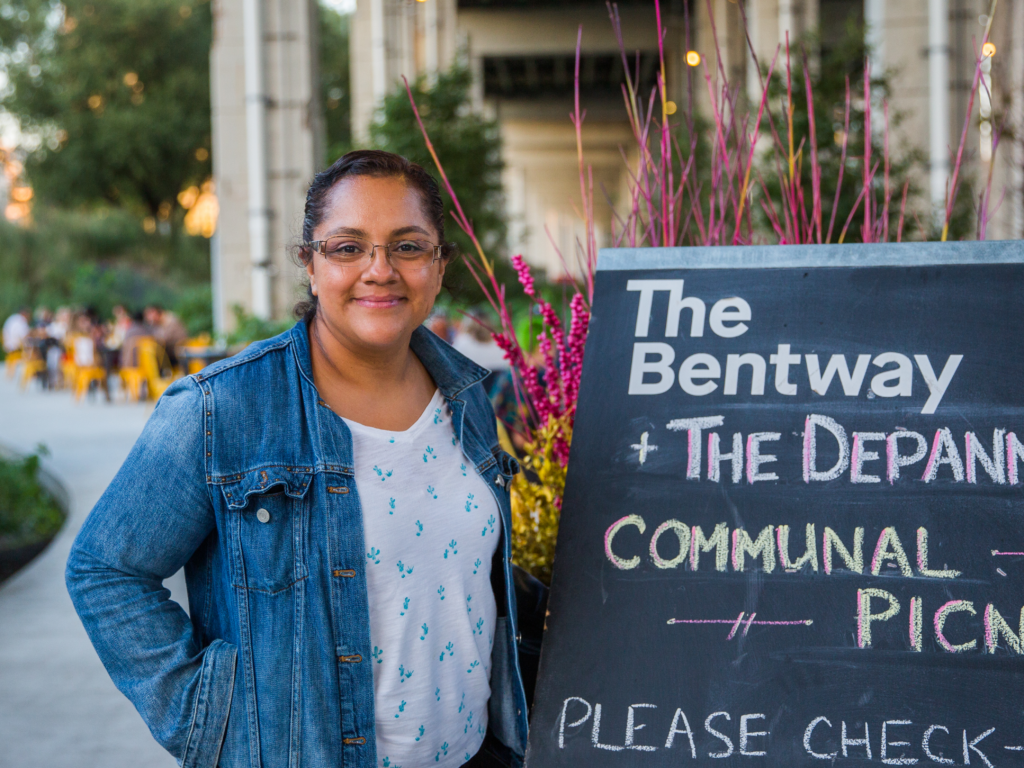
ABOUT ERIKA ARAUJO
Erika Araujo is a trained nurse in Mexico who found her passion for Gastronomy once she emigrated to Canada. She completed the Culinary program at Humber College, and since then she has been tirelessly promoting Mexican culture and cuisine through her brand Ixiim, at workshops and culinary events like TacoFest, Soupalicious, and the PanAm Games.
Check back for the full menu… Details to follow!
ABOUT MARY FREIJ
The Depanneur
Founded in 2011 by Len Senater, The Depanneur is an ongoing, evolving experiment, prototype, and proof-of-concept exploring food’s role in building community, creating opportunity, and celebrating diversity. It has evolved over the years into a social, urban food hub where food producers, creators, and consumers can connect and explore new food ideas in a fun, informal setting.
